
New indoor trainer/bike season is heating up again this week, with Wahoo announcing not just one, but two new devices today – the Wahoo KICKR V6 as well as the new Wahoo KICKR Bike V2. Both of these trainers are more about internal connectivity upgrades than ride/experience changes. However, I’d argue that Wahoo’s changes here will fundamentally shift the direction of the indoor training landscape for many years to come.
The biggest change in the Wahoo KICKR V6 is built-in WiFi. With this WiFi connectivity the unit will now allow apps to connect via WiFi, potentially reducing/eliminating dropouts that can occur on ANT+/Bluetooth Smart in some high-RF environments (such as dense apartment buildings). Further, this new WiFi capability also means your Wahoo KICKR gets quietly updated in the background, ensuring it’s always up to date. The most notable ride change is a new ERG Easy Ramp, which automatically transitions back into ERG mode over 10 seconds if you stop (such as for the doorbell), mirroring a similar feature introduced by Elite this summer. Oh, and the price increases by $100, up to $1,299USD.
These announcements continue another busy week in the indoor trainer realm. Last week we saw Zwift announce their first indoor smart trainer, while Saris announced their new top-end Saris H4. And of course, earlier this summer Elite announced their new Justo top-end trainer. Your move, Tacx.
With that, I’ve been putting a media loaner Wahoo KICKR V6 through its paces across a variety of platforms and workout types to see how it handles. As usual, it’ll go back to them afterwards. If you found this review useful, feel free to hit up the links at the end of the site, or consider becoming a DCR Supporter. With that – let’s begin!
What’s New:
Before we get into all the hands-on action, let’s quickly run through what’s new on the KICKR V6 compared to the previous edition from 2020. Here’s the changes:
– Added built-in always-on WiFi (2.4 GHz)
– Added automatic firmware updates via WiFi
– Tweaked LED status lights to now show WiFi status
– Added odometer & usage stats for the trainer (useful for resale purposes)
– Added ERG Easy Ramp: Returns power to target power over 10 seconds after stopping
– Increased price to $1,299USD (+$100), other currencies listed below
Regarding the WiFi components, what’s cool here is that these use the exact same protocol as the existing Wahoo Direct Connect feature, which has been around for almost two years. Thus, all the major apps already support it – including Zwift, TrainerRoad, FulGaz, and of course SYSTM/RGT (among others). I’ve also verified and used the KICKR V6 with these apps without any issues.
Oh, and just as a quick recap, here’s the general overall specs that remain unchanged from the previous KICKR
– Compressing AXIS feet system to give slightly more motion (up to 5%), and quieter on harder floors
– Retains existing KICKR Direct Connect wired option for connectivity (requires adapter)
– Zero-calibration software algorithm
– Power Accuracy claim of +/- 1%
– Dual ANT+/Bluetooth Smart support, including ANT+ FE-C, plus power/speed/cadence broadcasting
– Axle Compatibility: 130 & 135mm quick release, 142x12mm & 148x12mm thru-axle
– 11-speed cassette included (11-28T)
– Compatibility for 8, 9, 10, 11sp cassettes (12-speed cassette compatible with XD/XDR adapter)
– Max 20% incline
– Max 2,200w supported resistance (at 40KPH)
– Built-in handle
– Requires power cable/be plugged in
And finally, here’s the official pricing for all regions Wahoo has listed:
– USD$1,299.99
– GBP£1,099.99
– EURO€1,299.99
– CAD$1,879.99
– AUD$1,799.95
– JPN¥175,550
Got all that? Good. The trainer starts shipping today.
In The Box:
The Wahoo KICKR V6 comes in a box very similar to that of the KICKR V5, which you’ll find artfully photographed above. Once you manage to free it of the inner box, you’ll find it protected in foam:
Below, are the parts included within the box. In a nutshell, you’ve got the trainer, a secondary set of AXIS feet (with more stiffness), the power cord, and some adapters for thru-axle bikes. Also, some paper stuff you’ll pretend to read. Oh – and stickers!
Starting off with the AXIS feet, these are extra sets that you can use to change stiffness levels. More on that later.
Here’s the included thru-axle adapters as well as disc brake spacer:
Then we’ve got the power cord. Depending on which region it’s shipped from, it’ll include differing power cord interfaces, though, the block portion is the same for all regions (100-240v).
Then there’s the trainer itself, which you’ll have plenty of photos of. But you can see the new tag on the inside here:
Then the paper manual stuffs, along with two stickers. Historically, I’ve placed these on the Wahoo KICKR power cord block, but these days that actually has a Wahoo label on the back of it (it didn’t use to, it was generic). But sometimes I still stick the sticker on the front so I can quickly spot it from a glance (admittedly, with a gazillion trainers, this is more of a me-problem than a normal person problem).
And with that, we’re done on this unboxing experience. Take the box and stash it somewhere in your garage or something, in case in a few years you want to resell it (notable with the new odometer feature for this purpose, though, admittedly more so if you ride less).
The Basics:
Setup of the KICKR is pretty quick and easy, at least assuming you’re using it with an 11-speed bike. That’s because it’s got an 11-speed cassette on it by default. In the event you’ve got another speed bike, you can swap the cassette by purchasing one yourself and installing it. It’s a pretty quick process that typically only takes 2-5 minutes.
So, assuming you do have that 11-speed bike, then the first order of business is opening up the legs. These are unlocked using the two little blue leg locks, which keep the legs both opened or shut, depending on the situation (storage/moving, or riding).
Additionally, you can adjust the height of the trainer itself, depending on what bike frame you’re riding. You’ll see the markings along the bottom. I always forget to adjust this each time I get a new KICKR, and then subsequently never remember to change it to the lower height when my wife rides her smaller bike. So half the time it’s usually wrong. There’s no real harm in that, it’s simply for comfort.
Next, if you haven’t already, plug it in. Here’s the back of the power cord, which I’ve always included in my reviews so you can figure out which is which down the road. Though, Wahoo has been writing the Wahoo name on the back for a couple of years now, which helps.
You’ll plug it into the flexible adapter at the back of the trainer. This is a trip-resistant adapter that twists with the cord and then will unplug in case you stumble over it.
Once plugged in you’ll notice the new status lights, specifically, the new WiFi one. Previously, it was ANT+ & Bluetooth Smart. Except, as Wahoo pointed out, since ANT+ was basically always-on broadcasting, then the light was always on making it mostly useless. Whereas both Bluetooth Smart & WiFi are connected on-demand, thus, now you can see status of the lights. Also, you may have noticed the added warnings about the flywheel being hot, new to the KICKR V6.
With that all set, go ahead and toss on your bike. Since the KICKR is a direct drive trainer, that means removing the rear wheel and attaching the bike directly to the cassette on the trainer.
You can choose whether or not to use a front wheel-block. You don’t need one, though I personally like it as it keeps my wheel from wobbling around aimlessly.
As with the last few generations of Wahoo KICKR units, the KICKR V6 is fully compatible with the Wahoo KICKR CLIMB, so if you have that, you can pair that up too. The KICKR CLIMB will raise/lower the front of your bike, simulating the climbs as you go through a course/route.
Next, there’s the AXIS feet. These were introduced in the last version of the Wahoo KICKR (V5), and nothing has changed here. There’s technically three sets of feet, with one foot per leg (the middle strut has a non-removable AXIS foot built into it). Here’s all three feet (in black) laid out, plus the mounting hardware for the left/right sides:
As you can see from the manual that you didn’t read, the three sets of feet align to three different resistance levels, which would be most applicable based on rider weight. I’ve previously tried all the sets, including doing full rides on both the smallest and largest feet.
Looking at mounting, the feet spin off and then are disassembled with a simple hex wrench. It takes just a few seconds to do/change.
Here’s what a mounted foot looks like up close:
The feet are designed to give up to 5° extra movement/sway side to side. The main idea here is less about feeling like outside motion (such that a rocker plate would provide), and more about giving a little bit more sway that helps in longer trainer sessions by allowing your butt to make micro-adjustments on the saddle (as it would outside). Also, the feet help dampen vibrations on harder surfaces, for those that might need that (such as in some apartments).
So, by now you’re asking whether or not it makes any difference? Nah, not really – at least not on a trainer mat. Basically, on a trainer mat you’re gonna get all the cushion that you can get already. However, if you’re placing the trainer directly on a hard surface like concrete, then yes, you’ll feel very slightly more movement. But this is quite a bit less than the more modest movement you’d get from the new Elite Justo smart trainer, or an actual rocker plate.
Note that the AXIS feet are also sold separately, and are compatible with all existing Wahoo KICKR trainers (but not CORE/SNAP, since that’s a different leg design, and not ROLLR because there’s no feet at all). So, if you do have an older unit (V1-V4) and want to reduce vibrations, that may be an option. They’re $79.
With all that said, let’s start riding. Given the KICKR is a smart trainer, it’ll change resistance automatically in a few different ways, primarily driven by different applications/methods. But most of this all boils down to two core methods:
ERG Mode: Setting a specific power level – i.e., 210w. In this mode, no matter what gearing you use, the trainer will simply stay at 210w (or whatever you set it to).
Simulation (SIM) Mode: Simulating a specific outdoor grade – i.e., 14% incline. In this mode, it’s just like outdoors in that you can change your gearing to make it easier or harder. Wattage is not hard-set, only incline levels.
In the case of simulation (aka slope) mode, the KICKR V6 can simulate from 0% to 20% incline – the same as the last two KICKR versions. While other trainers can simulate above 20% these days (including ones quite a bit cheaper than the KICKR), I continue to question how many people actually want to ride such a gradient. When I’m outside doing any road rides with more than about 12% gradient, it just sucks – let alone 14%, 16%, and more. A 24% incline? There’s just no reason I want to relive that scenario voluntarily indoors.
Then, to top that (figuratively or otherwise), if you’re using Zwift, most people never bother to change the defaults, which means Zwift will automatically half the values anyways. Specifically, Zwift’s default Trainer Difficulty level is 50%, meaning, a 10% grade feels like a 5% grade. You need to change the ‘Trainer Difficulty’ level to 100% in order to feel it (and most people don’t bother to). Where the higher incline values from manufacturers can matter though is at low-speed high-wattage climbs up those 12% or beyond ascents. But in the last couple of years, that’s not really an issue either.
The second mode the trainer has is ERG mode. In that case, the company claims up to 2,200w of resistance at 40KPH. Although, realistically, you don’t care about that. I can only barely (maybe) break 1,000w for a second or two, and even most front of the non-pro pack cyclists aren’t going to top 1,800w. The pros would only be just a bit beyond that. Said differently: Peak numbers in this competition don’t matter. Instead, what matters is actually a harder metric to make clear – which is the ability to simulate high grades and lower speeds (especially if you’re a heavier cyclist).
One core test I do with all trainers though is responsiveness: How quickly does it respond to ERG mode changes? I typically do that with my 30×30 test via TrainerRoad, though it doesn’t really matter what method you use as long as you’re looking at big shifts in wattage:
Now, I dive into all the nuances of this later on in the accuracy section, specifically including my 30×30 test via TrainerRoad, though it doesn’t really matter what method you use as long as you’re looking at big shifts in wattage.
So what about road feel and noise?
Like I always say – for me personally, it’s hard to separate the fact that I’m riding indoors from outdoors. It’s still a trainer, and I’m still looking at a wall in front of me. My brain can only turn off so much of that. Still, much of the road-like feel is driven by the flywheel, and be it physical or virtual, flywheel sizes tend to be measured in weight. This impacts inertia and how it feels – primarily when you accelerate or otherwise change acceleration (such as briefly coasting).
All that prefacing done, the KICKR V6 feels identical to the KICKR V5. And the KICKR V5/2020 feels identical to the KICKR V4/2018, because…well…nothing has changed there. The flywheel is identical here across all three of these units. And in terms of people’s happiness level with the KICKR2018/2022, everyone is largely pretty happy there in terms of road-feel. Given this is the same, I’m just as happy here as before. It’s smooth when it needs to be smooth, and ramps up (and down) correctly as you accelerate.
Finally, what about sound? It’s silent. Just like the KICKR2018/2020. As with those trainers and most new trainers in the last few years, the only thing you’re going to hear is the sound of your drivetrain. So essentially, how clean you keep your drivetrain is the key factor for how quiet your trainer is. If you’ve got a nice clean chain/chainring/cassette, then your KICKR will be legit silent. If it’s full of gunk/grit, then you’ll hear a (tiny) bit of sound.
With that, let’s dive into app compatibility.
App Compatibility:
The Wahoo KICKR V6 finally gets back the title of one of the most compatible trainers out there. When the KICKR V5 shipped two years ago, it was actually still missing the Bluetooth Smart FTMS trainer control protocol established years earlier. It’s since been added to that KICKR, so now with the KICKR V6 supporting both wired and wireless connectivity, it’s hard to argue it’s anything but the most connected trainer on the market – a title it first gained when the original KICKR was announced.
Here’s the complete list of protocol transmission standards/types the Wahoo KICKR Supports:
ANT+ FE-C Control: This is for controlling the trainer via ANT+ from apps and head units, and includes speed/cadence data. Read tons about it here.
ANT+ Power Meter Profile: This broadcasts as a standard ANT+ power meter, with speed and cadence baked in as well.
ANT+ Legacy Wahoo Trainer Control: Some older apps might still use this to control the Wahoo KICKR, it’s what Wahoo first started out on, but today most apps would use the FE-C variant.
Bluetooth Smart FTMS: This is the industry standard for apps controlling the trainer via Bluetooth Smart, and includes ANT+ power, speed, and cadence baked in.
Bluetooth Smart Wahoo Trainer Control: This is Wahoo’s private method of controlling trainers, and includes speed/cadence data – still present for older apps using it instead of FTMS.
Bluetooth Smart Power Meter Profile: This broadcasts as a standard BLE power meter with speed and cadence data.
Wired Ethernet Direct Connect: This is using the Wahoo Direct Connect ethernet adapter
It DOES NOT, however, support these protocols/transmissions (which trainers from Tacx and Elite do support):
ANT+ Speed/Cadence Profile: This broadcasts just your speed and cadence as a standard ANT+ Speed/Cadence combo sensor. Wahoo doesn’t do this for any trainers.
Bluetooth Smart Speed/Cadence Profile: This broadcasts just your speed and cadence as a standard BLE combo Speed/Cadence sensor. Wahoo doesn’t do this for any trainers.
The above two are mostly just useful when pairing to more basic smartwatches that might not support power meters/cadence, but I don’t expect it matters to too many people.
Now, by this point in this decade, most people know how a trainer pairs in Zwift via ANT+ & Bluetooth Smart, so instead, let’s get right to the WiFi goodness here. But fear not, if this is your first ANT+/Bluetooth Smart BBQ, we’ll talk about that in a second.
First, in order to get WiFi working on the Wahoo KICKR V6, you’ll need to download the Wahoo Fitness app, which is used to configure the WiFi network. You can also use said app for controlling the trainer and doing workouts, as well as tweaking other settings. But for most people, you’re just gonna use it once to configure WiFi. If you’ve just unboxed it, you’ll probably be offered a firmware update, which you should most definitely go ahead and do. Updates take about 2-5 minutes depending on whether or not your KICKR is feeling speedy.
Once installed, you’ll crack it open and search for nearby trainers, and add your KICKR. Then, you’ll see it’ll excitedly offer to connect up your WiFi network. Simply tap to search for your WiFi network and then type in the password. It’ll do a test connect and you’ll be done.
Note that the KICKR V6 only connects to 2.4Ghz WiFi networks, not 5Ghz ones. This is a disappointment for some, yes. Though, Wahoo says that they’ve done abundant testing with this, even putting a microwave directly next to the trainer, without any drops. It sounds like the primary driver for the lack of 5Ghz network connectivity is a story we’ve heard from countless other companies over the past two years: Chipset availability.
While some tech geeks might be displeased here, I also think most people (including myself) simply won’t care. It connected up to my Google Nest mesh WiFi network just fine.
With WiFi set up, we’ll jump over to the app of our choice. In my case, I’ll show you Zwift first, since more than likely that’s what you’re using. When you open up the pairing menu, assuming you’re on the same WiFi network, you’ll see the KICKR listed, up to three different ways. You’ll likely see it listed as both a Bluetooth Smart trainer as well as a WiFi trainer, and then if you’ve got an ANT+ adapter, you’ll see that too. On the WiFi side, Zwift isn’t updated yet to know it’s WiFi, so it just assumes it’s a Wahoo Direct Connect trainer via Ethernet. All works the same.
Once you’ve done the first one, you can repeat for both the controllable trainer as well as cadence side. And that’s it, you’re done.
If you do want to use that wired port instead, you can do so assuming you buy the Wahoo Direct Connect adapter. While that wired port on the back might look like Ethernet, it’s not.
Technically it’s an RJ25 port (identical externally to an RJ11 telephone jack port, just with more pins inside). However, you can’t just plug that into a 14.4 modem and dial-in Zwift. Instead, you’ll need to purchase a separate accessory adapter that’ll connect from that RJ25 port into RJ45 (Ethernet), which Wahoo sells for $100. These days, all apps, including Zwift, are compatible.
For reference, below, RJ45 (Ethernet) in yellow, RJ11 (telephone-style) in black.
I had hoped that Wahoo would get rid of the adapter that precisely nobody wants. But, given they gave us WiFi instead – which solves the issue for 99% of people having connectivity problems, I’ll take the tradeoff.
In any case, for my testing of the KICKR V6 I used WiFi for the app control, but also concurrently recorded a second copy of the data via ANT+ so that I could validate that the data streams matched (or, were better on WiFi). Further, I tested across both SIM mode (Zwift) and ERG mode (TrainerRoad, SYSTM, Zwift).
In terms of resistance and responsiveness, starting with SIM mode (where it changes the gradient), it had no issues while I hung out in a Pacer pack including the hilly terrain of the Titans Grove loop on Watopia. I’ve been using this route for a few years to test trainer responsiveness, as it’s actually a great way to see how quickly trainers can respond, plus, it has a nice flat section later for some high flywheel speed testing.
I’d also do ERG mode testing with Zwift as well, no issues there (see the accuracy section for more details on that). Then we’ve got some structured workout testing using SYSTM, which in this case leverages ERG mode. I tried getting it connected via WiFi, but it didn’t seem to work. It showed WiFi and everything initially, but when it came to starting the session, it forced itself upon Bluetooth instead (I show this a bit more in the video). Odd.
And then the workout itself, where everything worked well.
Finally, also some testing with TrainerRoad, also using ERG mode. You can see the DIRCON connection show up immediately here, alongside the Bluetooth Smart one (to the right).
Doing the workout, all was good.
As I always do, it’s important to make note of the gear selection section on the Tips page if doing a structured workout (this is shown in TrainerRoad, but it’s applicable to all apps). Specifically, to keep it in a small gear up front for the fastest responsiveness and accuracy. This is also true of all smart trainers in ERG mode (e.g. where it sets specific wattages). This doesn’t apply to SIM mode (regular gradient simulation).
I did all of my Zwift & TR ERG mode testing with the small chainring up front and about mid-cassette in the back. However, I did one ERG ride in Wahoo SYSTM with it on the big ring (simply because I forgot), and you can see how it’s a bit more wobbly. Totally fine for that particular ride, but a good example of why it matters.
With the KICKR V5 & V6, it has auto calibration. This means that within the apps you’ll see the calibration option, but that’s basically just for show. It just ignores it a few moments later.
With the auto calibration feature, Wahoo says there is no reason to calibrate it. So much so in fact that Wahoo will quietly override any calibration values it takes within a minute or two using a new continuous calibration system. Aside from general accuracy, this system eliminates various ways that people could tweak older KICKR units to boost power numbers for cheating in Zwift or other online races (even in major in-person events). The new behind-the-scenes continuous calibration looks at factors like temperature but also how the unit responds over the lifetime of the trainer to, according to Wahoo, ensure that it’s properly keeping itself in check even thousands of kilometers down the virtual road.
Calibration aside, Wahoo has their own app for validating various settings within the KICKR, as well as toggling a handful of settings related to how the trainer functions in apps. To access these, you’ll go back to the app we already downloaded to configure WiFi.
In addition to this, there’s two other notable features. First is the ability to use an external power meter to control your KICKR. In essence, this makes your trainer match your power meter. I very rarely recommend this (almost never), since it usually results in poor responsiveness. Plus, my general feeling here is that if either your trainer or power meter is so horribly off that this matters, then you should probably address that first. In the case of the KICKR, I’m not seeing issues with accuracy, so I really wouldn’t recommend this. The second feature is ERG Mode Power Smoothing. This basically fakes what the power data looks like in ERG mode (such as in TrainerRoad or SYSTM). Sure, Wahoo would say that it’s not faked and just heavily smoothed, but no matter, it basically makes everything look perfectly smooth rather than the reality of human and trainer fluctuations. I turn it off (it’s on by default) for all my testing, because otherwise I can’t compare actual accuracy.
Beyond this, you can see the serial number, firmware version, hardware version, and ANT+ ID of your trainer. And in the event you’re working on a support case with Wahoo, for troubleshooting they can also enable remote diagnostics of the trainer, which sounds kinda nifty:
Finally, Wahoo’s own app can be used to control the trainer and record basic workouts. In fact, the Wahoo app is still one of the most widely compatible and data-driven apps out there for simply recording a workout (even an outside one). It’ll happily pair to all your sensors, and then save files and upload them to piles and piles of 3rd party platforms.
While I rarely use the app indoors, I do occasionally use it for random tests. In fact, even Strava recommends it as an alternative to their own app after they killed off sensor support last fall.
You can control the trainer in a number of ways, including in ERG mode (setting a wattage point), incline/gradient mode (setting a % grade), and level mode (setting a specific level). You can’t have it automatically execute a structured workout for you, though you can do that with 3rd party apps as outlined, or bike GPS computers like the Wahoo ELEMENT/BOLT/ROAM, by pairing the KICKR as a smart trainer:
Aside from validating that the most recent firmware properly connects to the app and records data (it does), I didn’t use the ROAM to control the KICKR on any workouts. I think that by and large the vast majority of people are using various 3rd party platforms like TrainerRoad, SYSTM, Zwift, or others to execute structured workouts.
Power Accuracy:
As usual, I put the trainer up against a number of power meters to see how well it handled everything from resistance control accuracy, to speed of change, to any other weird quirks along the way.
In my case I used one primary bike set up in the following dual-power meter configurations:
Canyon Bike Setup: Favero Assioma Dual-sided pedals, Quarq DZero crankset
Cannondale Bike Setup: Garmin Rally RS200, Shimano R9200P crankset
This is all in addition to the trainer itself. Note that because you remove the rear wheel I can’t use something like a PowerTap hub to compare as well (which I would use in power meter testing normally).
In any case, I was looking to see how it reacted in a few scenarios: Zwift (Apple TV), TrainerRoad (iPad), and SYSTM (iPad). The actual apps don’t typically much matter, but rather the use cases are different. In Zwift with simulation mode you get variability by having the road incline change and by being able to instantly sprint. This reaction time and accuracy are both tested here. Whereas in TrainerRoad and SYSTM in ERG mode I’m looking at its ability to hold a specific wattage very precisely, and to then change wattages instantly in a repeatable way. There’s no better test of that than 30×30 repeats (30-seconds at a high resistance, followed by 30-seconds at an easy resistance). However, I also did an ERG workout in Zwift as well.
There’s two ways to look at this. First is how quickly it responds to the commands of the application. So for that, we need to actually look at the overlay from TrainerRoad showing when it sent the command followed by when the Wahoo KICKR achieved that level. Here’s the levels being sent (the blue blocks) by TrainerRoad (in this case via Bluetooth Smart on iPad) and how quickly the Wahoo KICKR responded to it:
The main thing I’m looking for here is how quickly it responds. In this case, the Wahoo KICKR was completing the transition in 2.5 seconds (below), which is exactly where I want it (ideally 2-4 seconds). Any faster and it’s actually too fast, and any slower and you’re burning interval time. There’s also the question of stability of holding the power set point. Stability is two factors: How even I pedal, and how evenly the trainer/bike controls the power. I generally only judge a trainer on my more perfect pedaling efforts. So you can see that I really nailed the first one, but towards the end of the workout (above) my body is a bit annoyed at its now 4th workout in 24 hours.
Next then is whether or not the unit is actually producing accurate power relative to known good units. For that we’ll look at this data set here, which compares it to a Garmin Rally RS200 dual power meter, and a Shimano R9200P power meter. Here’s the data set:
As one can quickly see, the Shimano R9200P is far above the others. This is a pattern I have seen across all of my tests over the last two months. However, it’s inaccurate in different ways on different days. To be clear, the Shimano is wrong. Sometimes it’s right, but not today. Meanwhile, the Garmin Rally RS200 and Wahoo KICKR match up nicely, with the Garmin Rally being slightly higher than the KICKR, where it should be from a drive-train loss standpoint.
Next, we’ve got another ERG workout, this one in Zwift. Frankly, this is boring. Everyone aligns basically happily. The Quarq DZero and Favero Assioma (Shimano edition) are all nearly identical save one spot:
Before we talk about the differences, notice above that little purple drop-out. That’s the KICKR ANT+ signal having either drop-out or wireless interference. It’s being recorded on the Edge unit, but that unit doesn’t drop the HR sensor – telling me that it wasn’t the Edge itself that had a hiccup, but either the air between the trainer/bike computer, or the trainer itself. Whereas the WiFi connection had no such issue.
Meanwhile, we do see the Quarq going a bit higher than the other units on these surges. Not sure what to say there, other than to note it. It could very well be right, but it’s hard to prove in this scenario.
Next, a ride within Wahoo SYSTM, comparing the Wahoo KICKR to the Garmin Rally pedals and Shimano R9200P unit. At this point you may be wondering why this one looks perfect but the 30x30s above aren’t? Well, two possible reasons. First, in the below case, I’m in the big ring (not usually where I do ERG workouts, but I just simply forgot). That results in the KICKR being a bit more wobbly with power control. Not a huge deal, but not as crispy as you see above in Zwift when using the small ring.
However, I suspect it also increases accuracy of the Shimano (put differently, the Shimano unit has issues with the small ring). Either way, the KICKR is a happy critter here.
Next a more traditional ride on Zwift, this time doing some loops in a group via pace partners. This makes it super interesting because it’s constantly shifting power while also constantly shifting terrain. All the units were happily together here (Shimano in the big ring). You do notice the very last sprint I did though, the KICKR ANT+ signal has a single drop (and again, the HR signal doesn’t drop-out). This particular route had both flat and hilly terrain, thus getting a workout of the gear shifting.
This is two drops on the ANT+ signal for the KICKR, even while none of the other power meters recorded ANT+ signal drops, nor any HR signal drops for the same time period (across three different bike computers). This makes me think there may be something up there, but it’s going to take many more rides to start establishing a pattern. But it’s something I’ll keep an eye on.
Ultimately, Wahoo nailed the power accuracy on this one the first time around, with no apparent issues across a wide range of tests, including different gearing as well as different terrain. I’m glad to see that, after the nearly 6-month period it took to get the previous KICKR V5 accuracy issues fixed after launch.
(Note: All of the charts in these accuracy sections were created using the DCR Analyzer tool. It allows you to compare power meters/trainers, heart rate, cadence, speed/pace, GPS tracks, and plenty more. You can use it as well, more details here.)
High-End Trainer Comparison:
I’ve added the Wahoo KICKR V6 into the product comparison database. This allows you to compare it against other trainers I’ve reviewed. For the purposes of this particular table, I’ve compared it against the Elite Justo, Saris H3, and Tacx NEO 2T, all of which are the top-end trainers from each company. Technically Saris launched the H4 unit last week, but I don’t typically add units to the database until I have them in-hand. Still, the differences are increased grade simulation at 25%, increased resistance to 2,300w, and increased accuracy to +/-1%. You can also mix and match and create your own trainer comparison charts with just about any trainer on the market in the aforementioned/linked product database.
| Function/Feature | Wahoo KICKR V6/2022 (Current Version) | Elite Justo | Saris H3 | Tacx NEO 2T Smart |
|---|---|---|---|---|
| Copyright DC Rainmaker - Updated November 28th, 2025 @ 3:23 am New Window | ||||
| Price for trainer | $1,299 | $1,199 | $1,099 | $1,399 |
| Trainer Type | Direct Drive (No Wheel) | Direct Drive (No Wheel) | Direct Drive (no wheel) | Direct Drive (no wheel) |
| Available today (for sale) | Yes | Yes | Yes | Yes |
| Availability regions | Global | Global | Global | Global |
| Wired or Wireless data transmission/control | Wireless + Wahoo Direct Connect Ethernet Adapter (Accessory) | WIRELESS + Elite WiFi/ETHERNET ADAPTER (ACCESSORY) | Wireless | Wireless |
| Power cord required | Yes | No (Note: No control w/o power though) | Yes | No |
| Flywheel weight | 16lbs/7.25kgs | 13.7lbs/6.2KG | 20lb/9kg | Simulated/Virtual 125KG |
| Includes cassette | Yes (11 Speed SRAM/Shimano) | No | No | No | Resistance | Wahoo KICKR V6/2022 (Current Version) | Elite Justo | Saris H3 | Tacx NEO 2T Smart |
| Can electronically control resistance (i.e. 200w) | Yes | Yes | Yes | Yes |
| Includes motor to drive speed (simulate downhill) | No | No | No | Yes |
| Maximum wattage capability | 2,200w @ 40KPH | 2,300w @ 40KPH | 2,000w | 2,200w @ 40KPH |
| Maximum simulated hill incline | 20% | 24% | 20% | 25% | Features | Wahoo KICKR V6/2022 (Current Version) | Elite Justo | Saris H3 | Tacx NEO 2T Smart |
| Ability to update unit firmware | Yes | Yes | Yes | Yes |
| Measures/Estimates Left/Right Power | No | Yes | No | Yes |
| Can directionally steer trainer (left/right) | No | With Elite Rizer or Sterzo Smart (accessories) | No | No |
| Can simulate road patterns/shaking (i.e. cobblestones) | No | No | No | Yes | Motion | Wahoo KICKR V6/2022 (Current Version) | Elite Justo | Saris H3 | Tacx NEO 2T Smart |
| Whole-bike physical gradient simulation | With KICKR CLIMB (Accessory) | With Elite Rizer (accessory) | No | No |
| Can slide forward/back with movement | No | No | With Tacx NEO Motion Plate (Accessory) | |
| Can rock/tilt side to side (significantly) | Barely...just barely. | SLIGHTLY | No | Very barely | Accuracy | Wahoo KICKR V6/2022 (Current Version) | Elite Justo | Saris H3 | Tacx NEO 2T Smart |
| Includes temperature compensation | Yes | Yes | Yes | N/A |
| Support rolldown procedure (for wheel based) | N/A | N/A | Yes | N/A |
| Supported accuracy level | +/- 1% | +/- 1% | +/- 2% | +/- 1% | Trainer Control | Wahoo KICKR V6/2022 (Current Version) | Elite Justo | Saris H3 | Tacx NEO 2T Smart |
| Allows 3rd party trainer control | Yes | Yes | Yes | Yes |
| Supports ANT+ FE-C (Trainer Control Standard) | Yes | Yes | Yes | Yes |
| Supports Bluetooth Smart FTMS (Trainer Control Standard) | Yes | Yes | Yes | Yes |
| WiFi or Ethernet | Built-in WiFi, Ethernet with Wahoo accessory adapter | WITH OPTIONAL ACCESSORY | No | Data Broadcast | Wahoo KICKR V6/2022 (Current Version) | Elite Justo | Saris H3 | Tacx NEO 2T Smart |
| Transmits power via ANT+ | Yes | Yes | Yes | Yes |
| Transmits power via Bluetooth Smart | Yes | Yes | Yes | Yes |
| Supports Multiple Concurrent Bluetooth connections | Yes, 3 Concurrent | Dual (Two Channels) | No, just one | No, just one |
| Transmits cadence data | Yes | Yes | Yes | Yes |
| Bridging or re-transmission | No | Yes (HR & Cadence) | No | No |
| Race Mode (High Speed Data) | Yes (Bluetooth) | No | Purchase | Wahoo KICKR V6/2022 (Current Version) | Elite Justo | Saris H3 | Tacx NEO 2T Smart |
| Amazon | Link | Link | Link | |
| Backcountry.com | Link | Link | ||
| Competitive Cyclist | Link | Link | Link | |
| REI | Link | Link | Link | DCRainmaker | Wahoo KICKR V6/2022 (Current Version) | Elite Justo | Saris H3 | Tacx NEO 2T Smart |
| Review Link | Link | Link | Link | Link |
And again, you can hit up the product comparison database to mix and match any trainers you’d like.
Wrap-Up:
The Wahoo KICKR V6 is a modest upgrade at face value, but one that nails ease of use in two key areas: Connectivity, and ERG mode. On the connectivity front, nothing is more frustrating on a smart trainer than dealing with drop-outs. And while Wahoo’s existing Direct Connect option solved that for many, it also required that you run an ethernet cable potentially some distance (which wasn’t always viable). Whereas the addition of WiFi is literally a Staples Easy Button solution. Speaking of which, the new Easy ERG just makes it easy to get back onboard in case the UPS man ding-dongs delivering your giant case of 100 fortune cookies. Long-time trainer users know how useful this is (the ERG recovery, but also the case of fortune cookies).
About the only disappointment here is that we didn’t see Wahoo switch to an electromagnetic design, akin to what Wahoo has on their KICKR Bike, and which Tacx has been using for nearly a decade on their Tacx NEO series trainers. That type of electronic drive system can not only react faster, but, more notably, simulate downhills (by driving forward the flywheel), while also simulating road conditions (e.g. cobblestones/gravel/etc…). And of course, it’s also unfortunate to see the increase in price when most trainers have been decreasing in price the last 12 months, albeit that was more an overstock situation and new products are dealing with increase costs/inflation.
Still, Wahoo’s latest offering is solid – and the inclusion of WiFi is something I and others have been asking for, for years. It substantially increases reliability of the trainer by minimizing wireless interference (as I showed in my testing above, no less), while also simply ensuring your trainer is always up to date on the latest firmware updates. Protocols like ANT+ & Bluetooth Smart certainly aren’t going anywhere anytime soon, but this offers another option for users, and one that I expect will become the default for most.
As for the usual question people will ask: Wahoo KICKR series or Tacx NEO Series? Like before, that’s almost a political preferences question. The reasons to choose one over the other haven’t changed much in the last few years. But, the added Wahoo WiFi connectivity here does meaningfully add to the calculus, and I’d also argue that combined with the still ongoing lack of multichannel Bluetooth on Tacx trainers, or gradient simulator option (e.g. KICKR CLIMB), increases the need for a Tacx NEO series refresh while concurrently shifting a greater share of reasons towards Wahoo’s offerings. Meanwhile, with Elite’s new Justo introducing the ERG Easy Start feature and having RISER gradient simulation, it should absolutely be considered when looking at these top-end units. But more on comparisons in a later piece.
With that, thanks for reading!
Found This Post Useful? Support The Site!
Hopefully you found this review/post useful. At the end of the day, I’m an athlete just like you looking for the most detail possible on a new purchase – so my review is written from the standpoint of how I used the device. The reviews generally take a lot of hours to put together, so it’s a fair bit of work (and labor of love). As you probably noticed by looking below, I also take time to answer all the questions posted in the comments – and there’s quite a bit of detail in there as well.
If you're shopping for the Wahoo KICKR V6/2022 (Current Version) or any other accessory items, please consider using the affiliate links below! As an Amazon Associate I earn from qualifying purchases. It doesn’t cost you anything extra, but your purchases help support this website a lot.
Here's a few other variants or sibling products that are worth considering:
And finally, here’s a handy list of trainer accessories that most folks getting a smart trainer for the first time might not have already:
And of course – you can always sign-up to be a DCR Supporter! That gets you an ad-free DCR, access to the DCR Shed Talkin' video series packed with behind the scenes tidbits...and it also makes you awesome. And being awesome is what it’s all about!
Thanks for reading! And as always, feel free to post comments or questions in the comments section below, I’ll be happy to try and answer them as quickly as possible. And lastly, if you felt this review was useful – I always appreciate feedback in the comments below. Thanks!





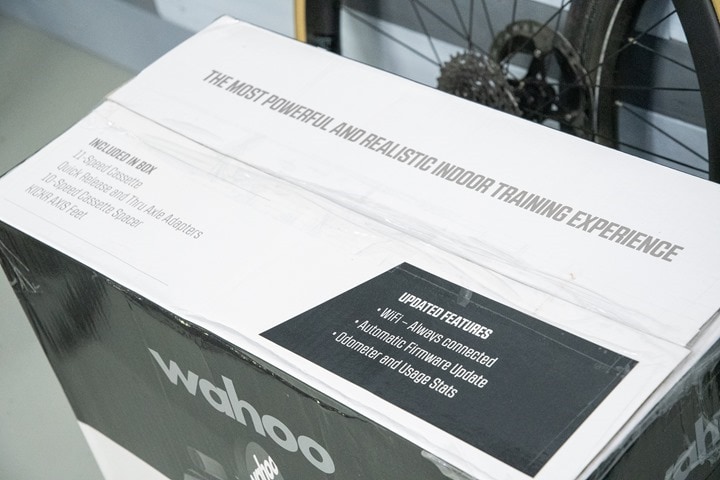
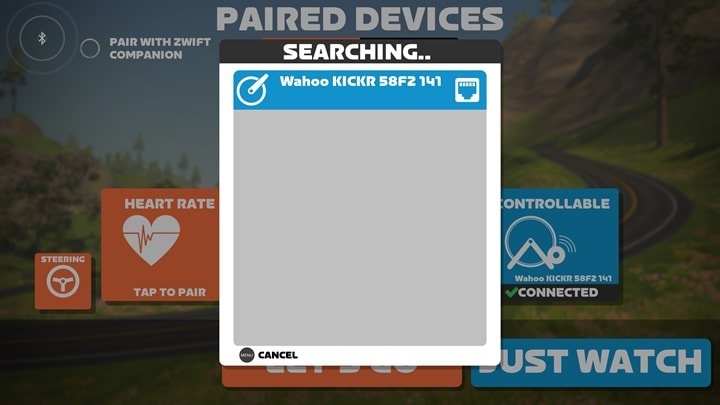
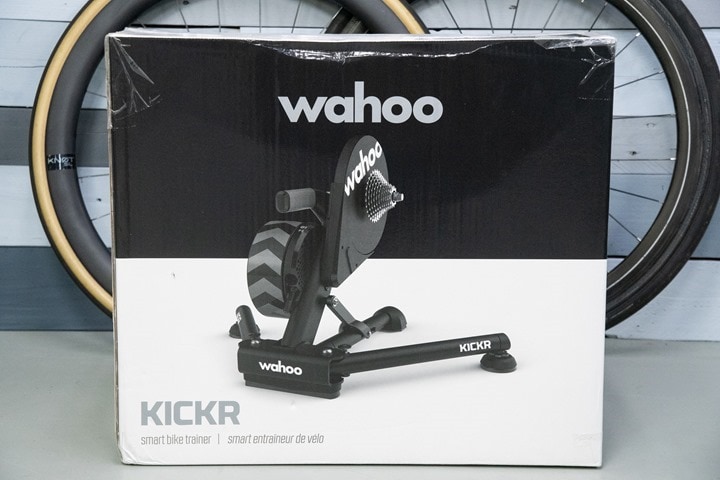
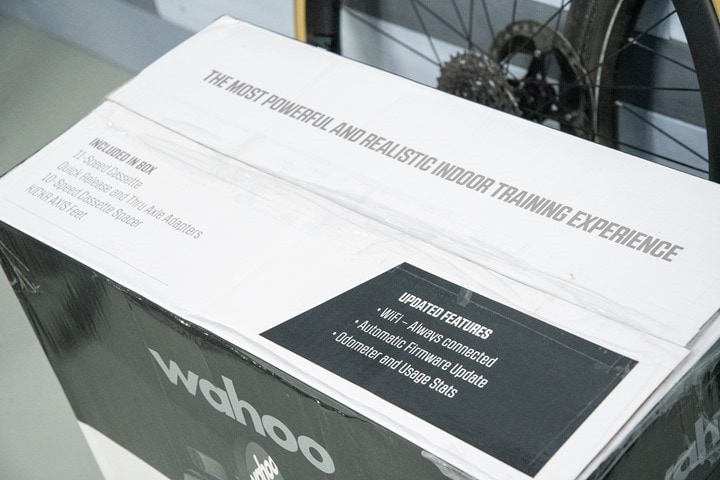
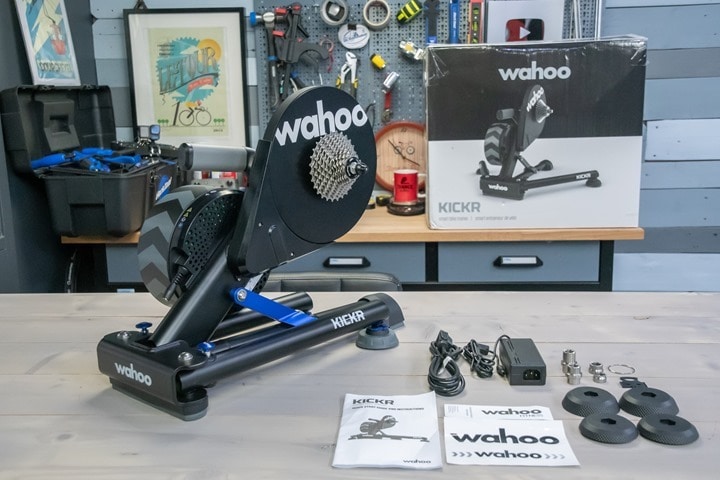
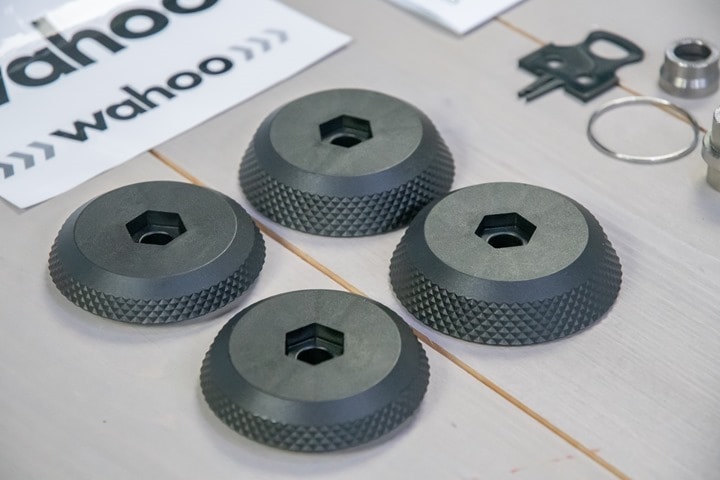
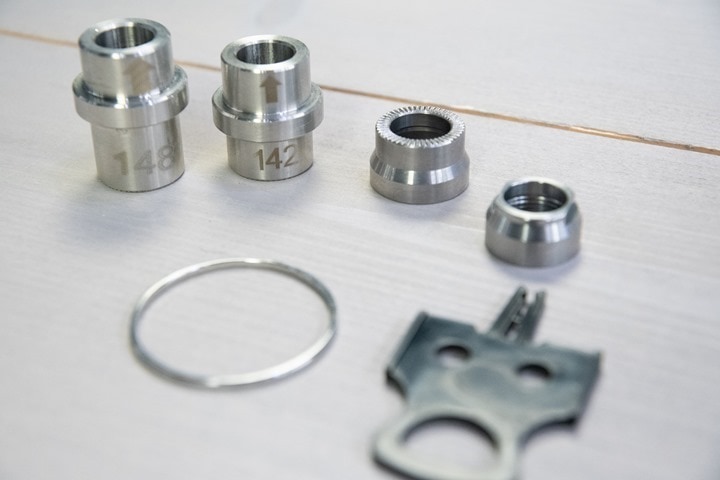
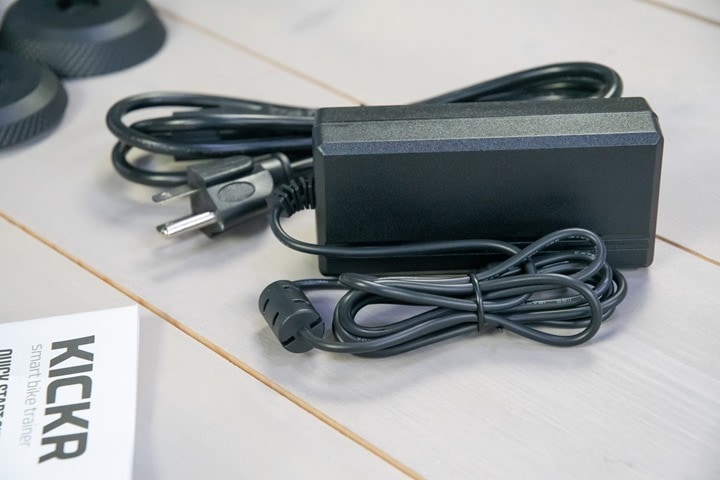
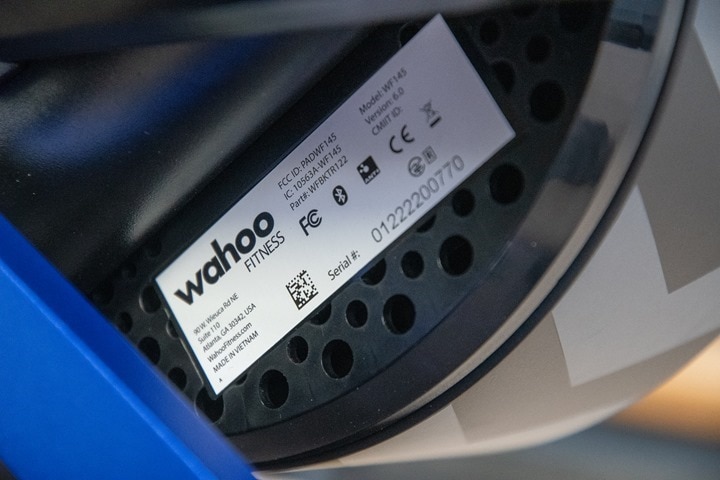

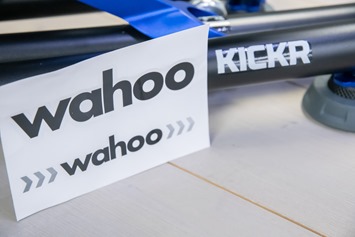
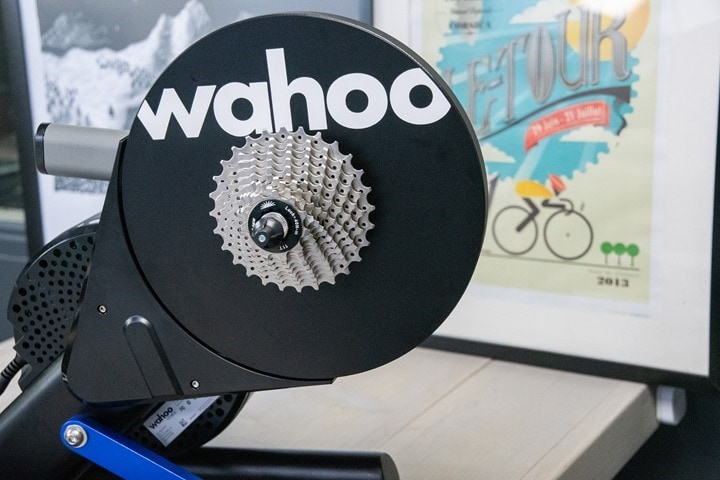
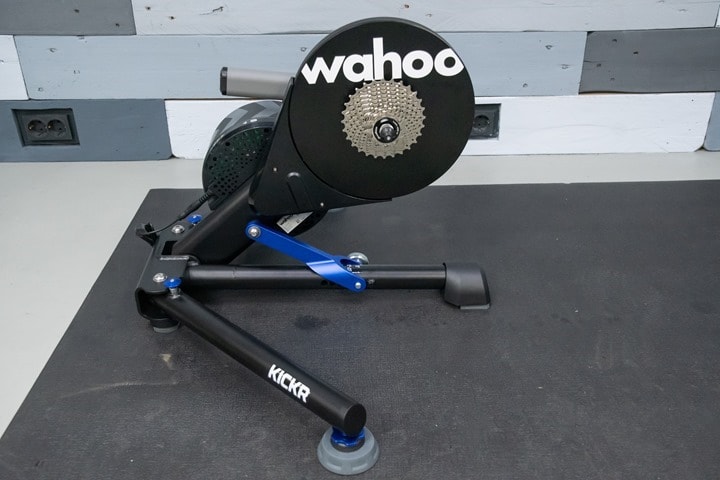
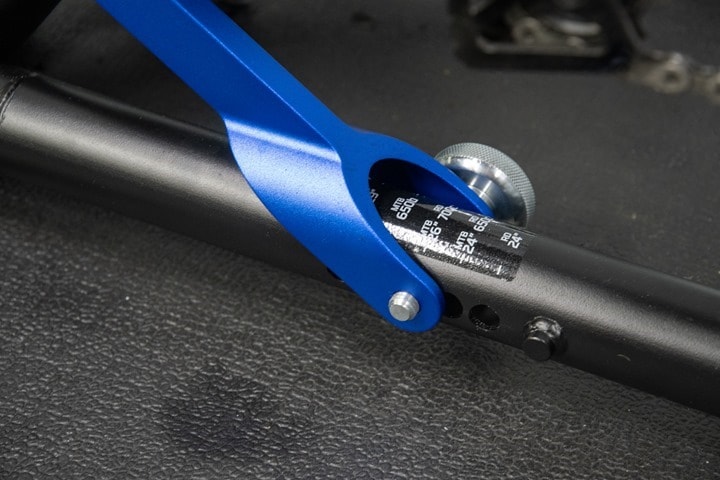
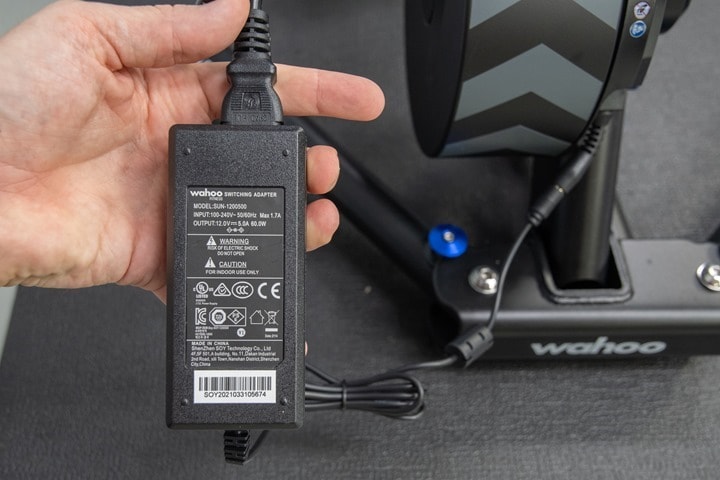

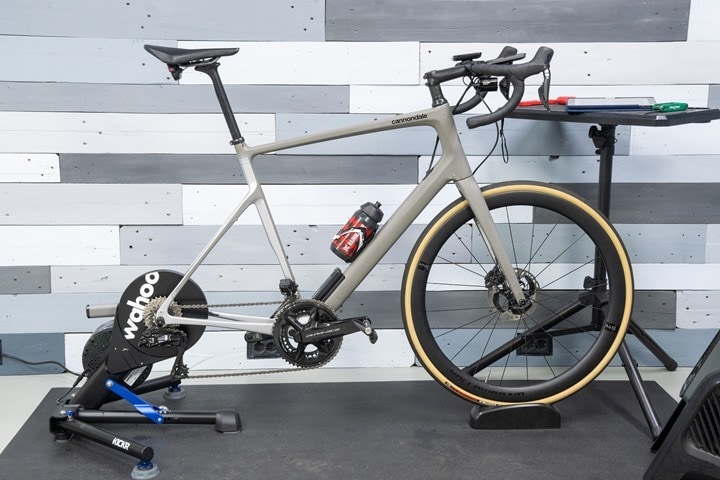
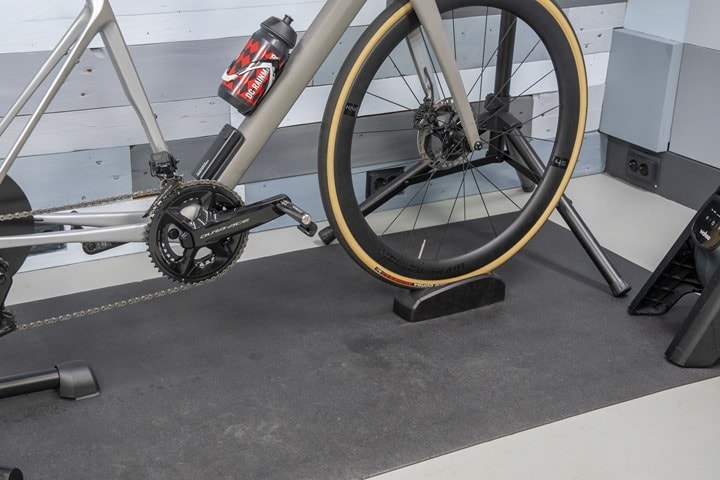
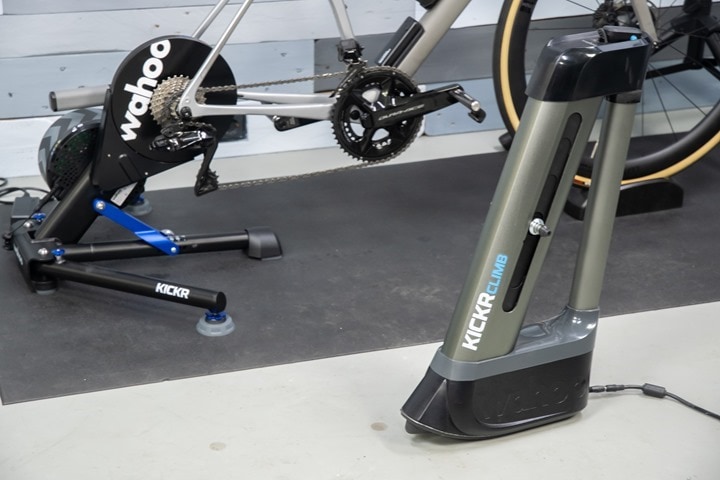
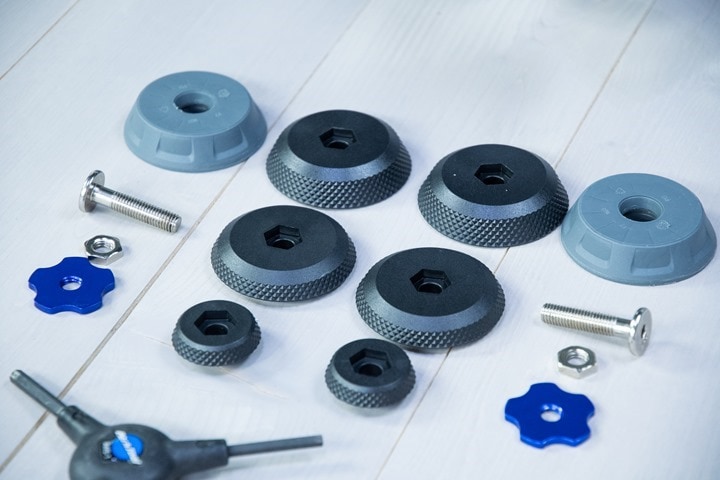
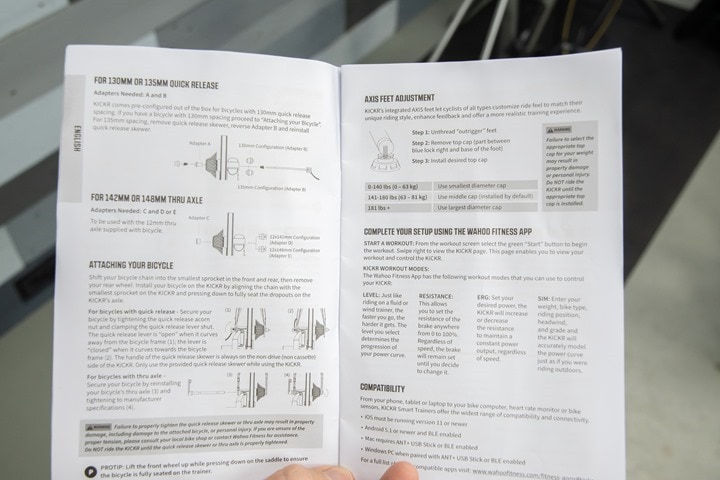
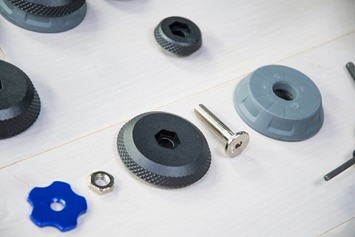
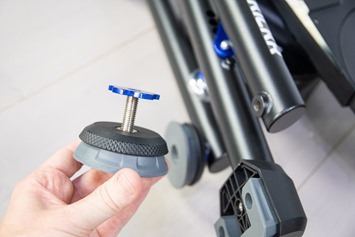
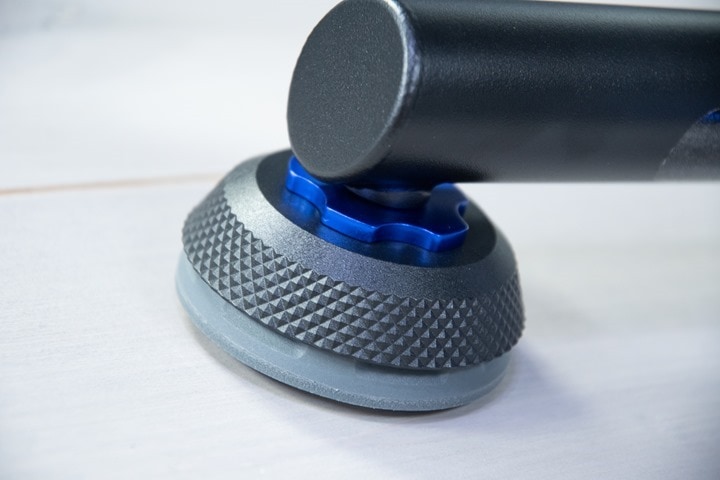

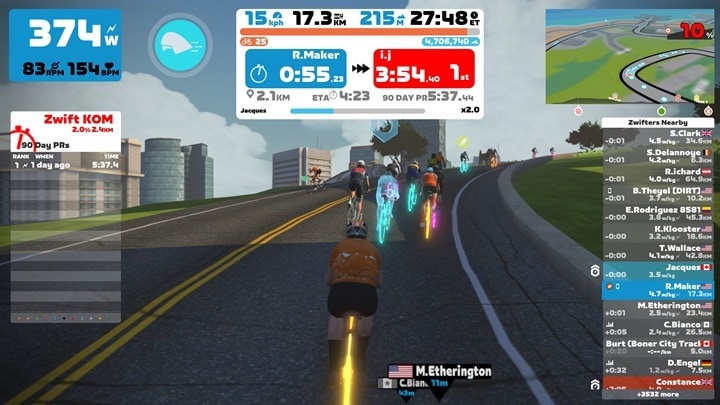
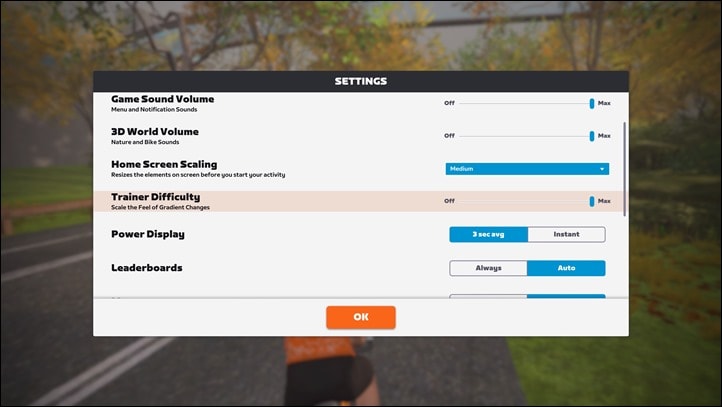

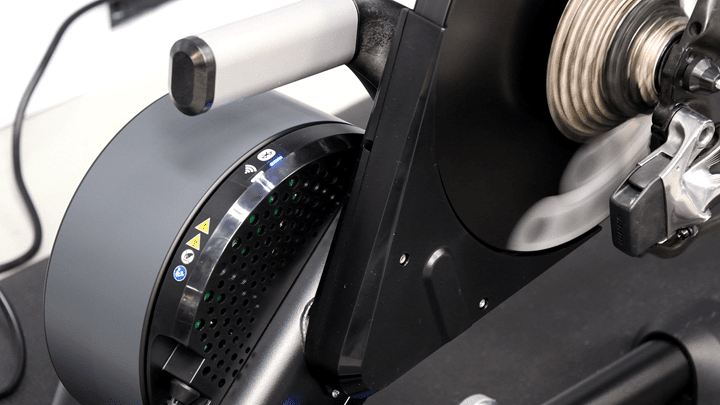
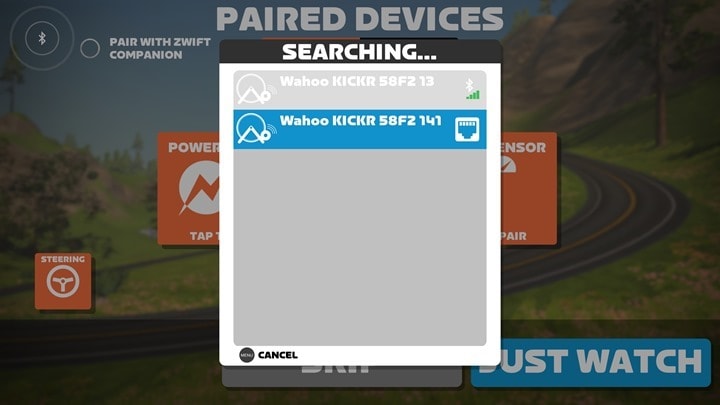
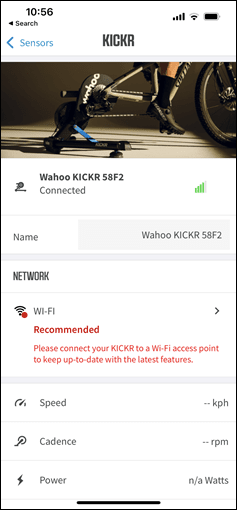
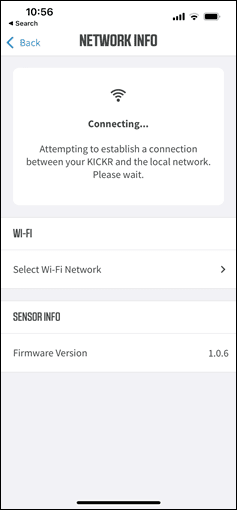
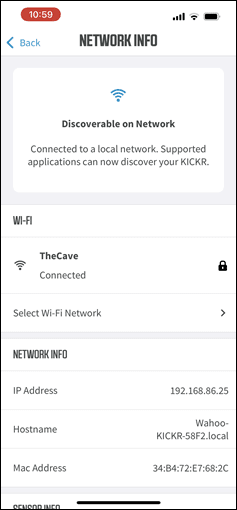
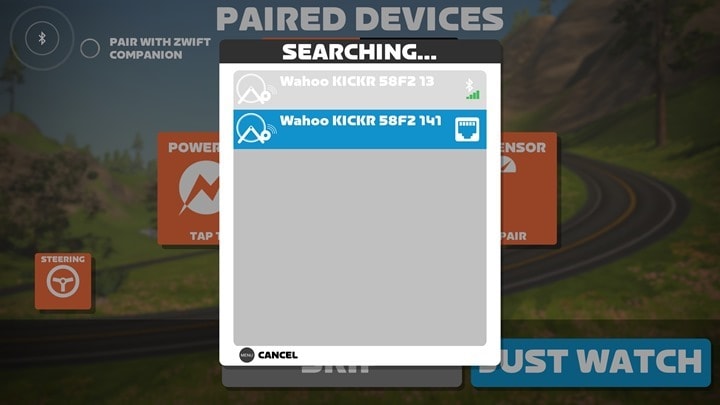
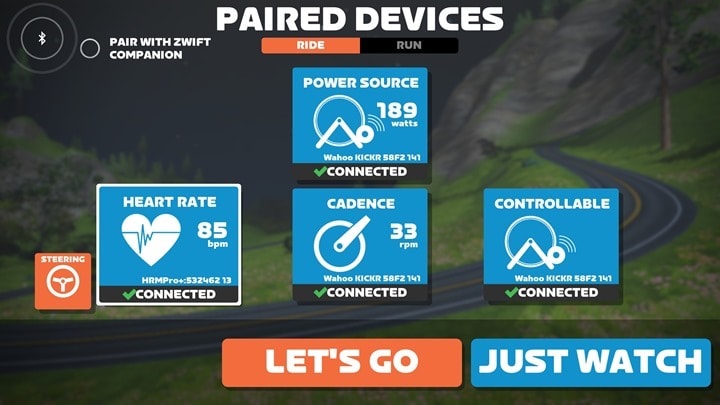
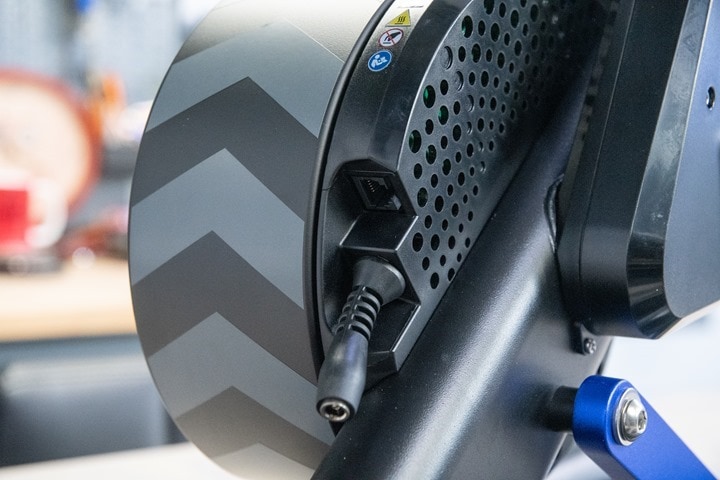
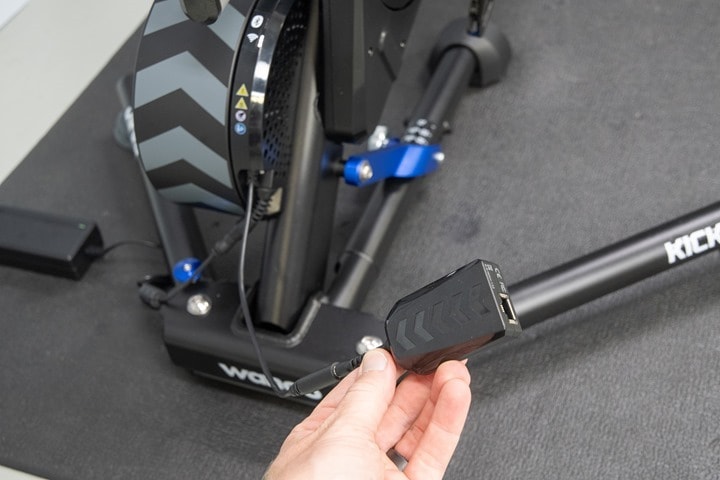
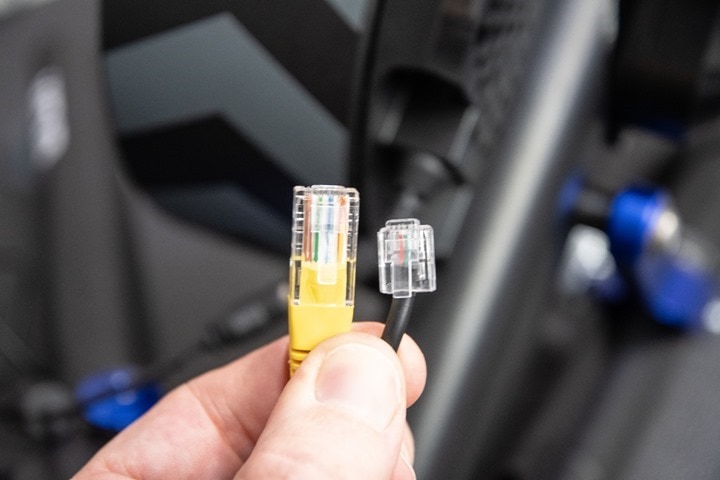

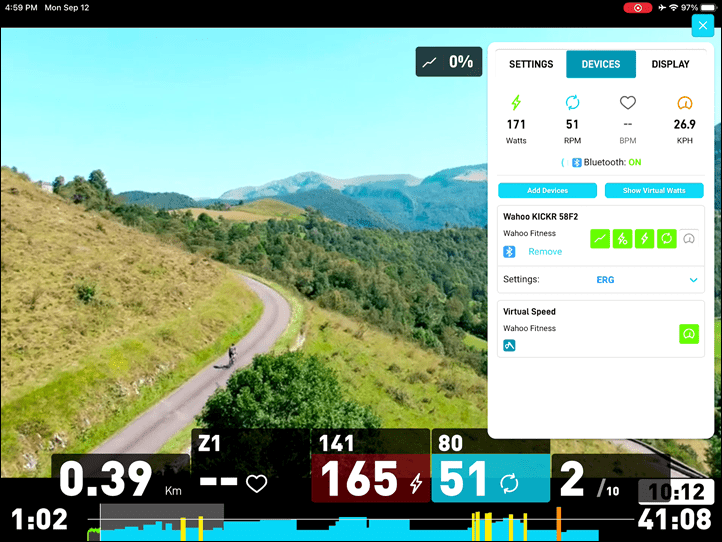
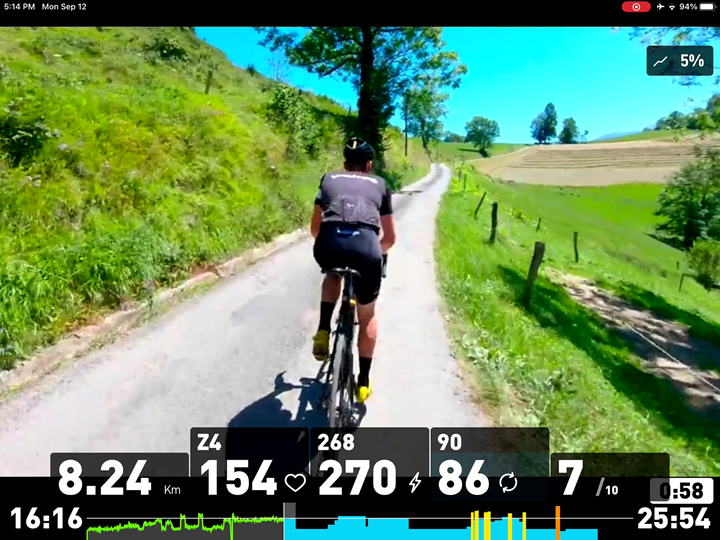
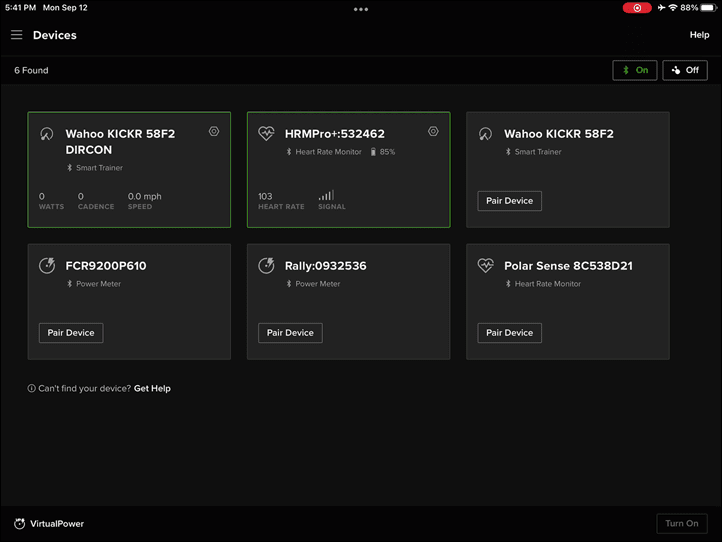
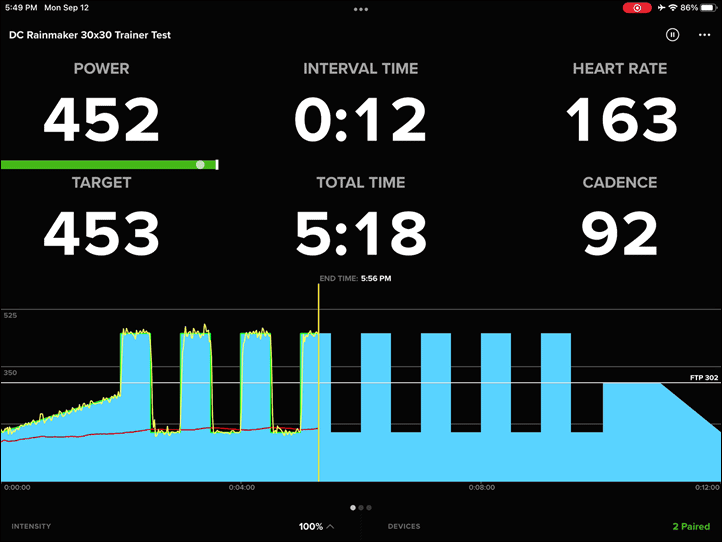
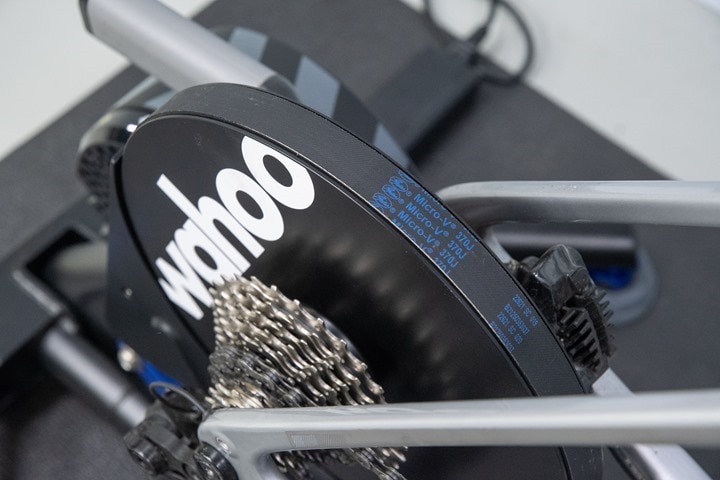
![clip_image001[5] clip_image001[5]](https://media.dcrainmaker.com/images/2022/09/clip_image0015_thumb.jpg)
![clip_image001[8] clip_image001[8]](https://media.dcrainmaker.com/images/2022/09/clip_image0018_thumb-1.png)
![clip_image001[4] clip_image001[4]](https://media.dcrainmaker.com/images/2022/09/clip_image0014_thumb-1.png)
![clip_image001[6] clip_image001[6]](https://media.dcrainmaker.com/images/2022/09/clip_image0016_thumb.png)
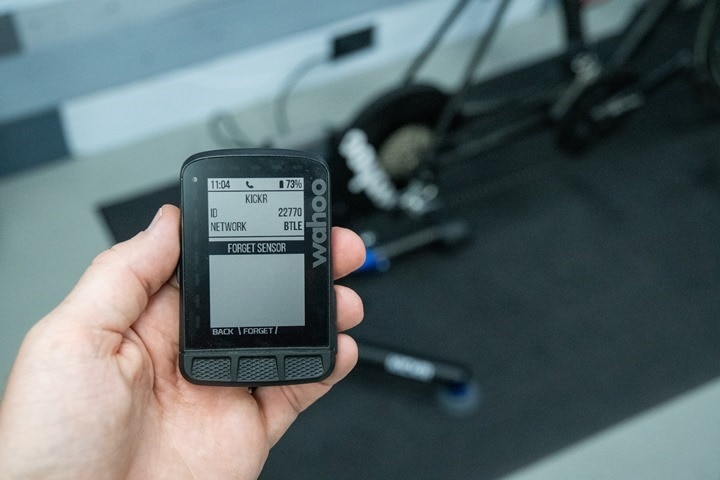
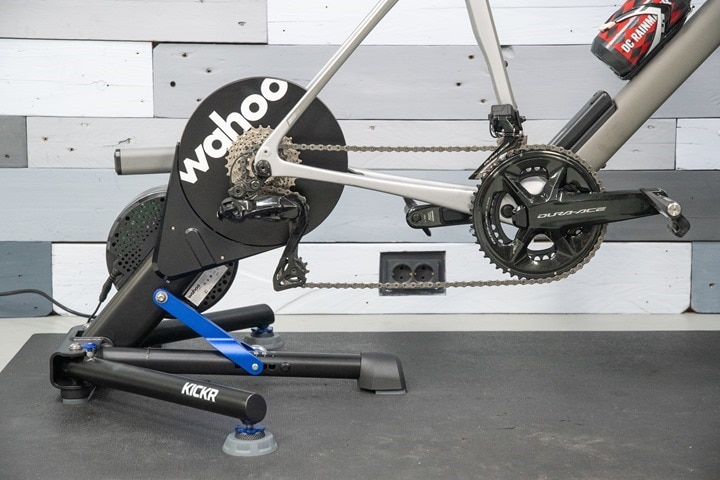








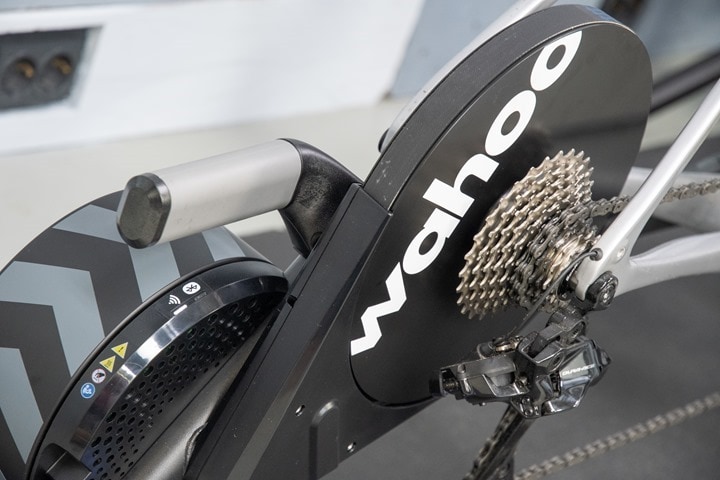
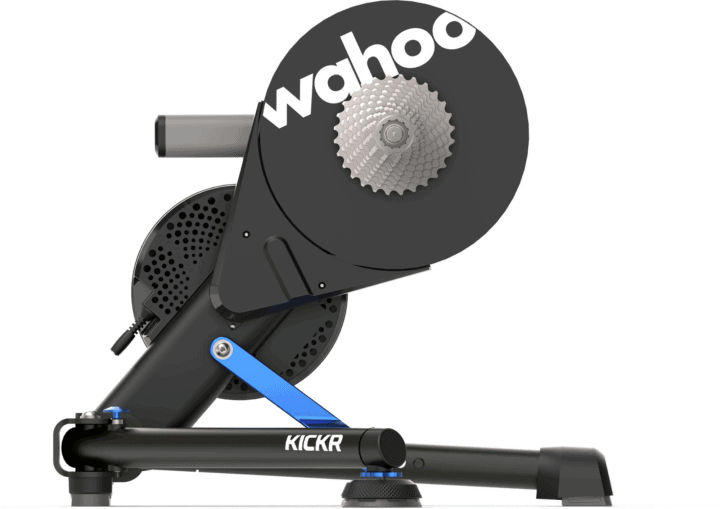
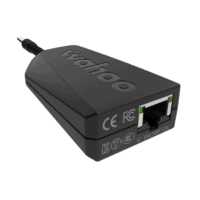
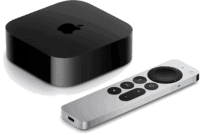



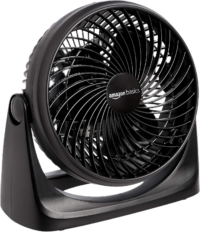

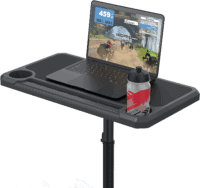
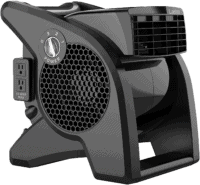
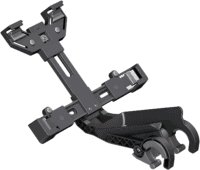





















I really, really don’t want them to change to an electromagnetic design. I have the Neo and Kickr and there’s no contest the Kickr is more solid to pedal against because you are physically pedaling against something. The Neo, even the new one which “fixed” pedal slip still slips and feels weird and often a bit grainy. Not to mention the form factor would have to change, and the Neo just isn’t as nice to move about the place or fold/unfold.
Let’s not fall into the trap of demanding change for the sake of change or changing because something sounds cooler or more modern. The Kickr is a well proven unit, let’s allow them to slowly add refinement, they’re doing a great job.
There might need to be some clarification on the types of resistance units used in the indoor space and the term “electromagnetic.”
Specifically, Tacx actually uses a motor instead of a brake like most others but most of the issues discussed (slipping) are due to how the drivetrain is connected vs. the resistance type.
I kind of agree the terminology needs work. Fundamentally they use the same resistance though, the difference seems to be Tacx use magnets to allow fine grained control – it’s this I imagine that causes the grainy feeling. The lack of real flywheel is the major issue for me, it’s this that makes it feel slippy because you’re not mechanically moving something, and the lack of belt means it’s a 1:1 gear too. I don’t think my Neo 2T is bad, it’s certainly better than old trainers, and I do like the road feel, otherwise I’d have sold it. Compared to the Kickr though, it’s just not where it needs to be in terms of storage, transport, size, weight, feel, etc.
My comment was in direct response to Ray saying it would be nice to see Wahoo change to EM by the way, Perhaps the Kickr bike is way better than the Neo 2T, I’ve not tried one, but it would be a shame to see any compromise to size, handle, feel on the Kickr in the name of marketing progress.
I totally get what you’re saying and agree.
For the record, I’m quite positive the Wahoo Kickr bike, Tacx Neo 2T, and the Tacx Neo bike use “motors” while everything else uses some form of a “brake,” most likely some version of an Eddy current (electrical current flowing through a rotating conductive element).
Going forward, we’ll see more motors than brakes.
I just bought a Kickr V5 because it was $500 off. Is Wifi going to be that big of a deal?
No. If you don’t experience dropouts, it was fine until now and will be fine in the foreseeable future. Also, there is still the DirCon option on the V5.
Thank you for this comment!
Ray, will do be doing a review on the new Kickr Bike V2? Very keen to read your POV on it.
Yup, one is on the way.
Can you give us any indication when you might have the review of the bike ready?
Go on, Ray, you tease!
TLDR: Bike was physically working just fine, I used it just fine for a month or so, but upon starting to do all my data/power analysis I noticed an odd offset in power. Expanded by testing to multiple pedals, found the same. Conferred with another reviewer, also found the same.
Conferred with Wahoo, they dug. They dug some more and found out our bikes had their power calibration values zero’d out on accident at the factory before they were sent out. Hence the very specific offset.
They dug some more to see if they could simple update said value remotely. They can’t. I’ve been waiting about 6 weeks or so now as they say a new one is soon on the way, but each week it gets delayed.
Anyways…that’s the TLDR variant of my KICKR Bike V2 review.
Thanks for the interesting info!
I would really like to see the ErgMode Slow Start on the V5 as well. Looks like purely software.
But that would immediately extinguish half of the reasons to upgrade, so we won’t see it I guess?
I suspect EZ-ERG won’t be back-loaded onto older units. Much like cadence detection never went backwards (which is arguably a minor improvement despite being nice), I doubt that EZ-ERG makes it to older models. That is a much larger feature improvement and one I expect they want people to pay to get.
MAYBE… I could see them offering it via a one time payment of some amount vs the otherwise free FW updates, but I kinda doubt that too.
I doubt it too, just wanted to point out how stupid it is to change perfectly good hardware for purely software changes.
And slowly ramping up resistance in erg mode – correct me if I’m wrong – is a lot more trivial than guesstimating cadence, where you can’t just take flywheel speed and resistance because it depends on gearing. Also, all Wahoo trainers that didn’t transmit cadence shipped with a cadence sensor, so this is kinda a moo point anyways.
Why don’t the trainer apps have the equivalent of EZ-ERG? Why does that have to be a hardware-specific thing?
Would have been possible until this summer, I guess. Now I think it would be a huge mess, because if the trainer software slowly increases resistance, this would work with “older” trainers, but when newer trainers also slowly increase resistance, I guess that would be a not a great user experience. Especially since there is no way the software knows that the trainer is slowly ramping the resistance back up.
Maybe fixable with a setting within the app or so?
They do. TrainerRoad already does this.
It was put in the v5 on the last firmware update apparently.
Just bought another v5 from Wiggle for £500, v6 is £999. Not sure wifi connection is worth £499 price difference.
Does anybody know if a new Climb is also coming? Kickr V7 is supposed to come in late 2024, but Climb hasn’t been changed for a while?
What would be refreshed? That is, are there issues that people are clamoring to be fixed/improved? If not I doubt they would bother just to have a v2.
Well, the belt failures seen within the Wahoo User FB group would seem like a decent starting point for an “upgrade”. I have no idea what actual percentage it is in the full production run, but it
sure not zero. We’ve seen plenty and Wahoo is prompt on addressing replacements, reportedly even for units that are out of the rated 1 year warranty period.
Outside of that, smoother operation would be another place to look. The motion is not what I see as perfect and comparing my experience to what I see on the Elite version shows room for improvement too. Another is a case design issue with the current one where some bikes with disc brake forks interfere and are not compatible. Consideration for “steering” might be another areal to consider too, since the Elite one captures that as well.
The V1 Climb is a functional unit in V1 form, but not what I would call perfect.
Thanks Ray. Glad to see the Kickr refreshed. For us V5 people, what are your thoughts on a new dongle to add wifi or ethernet/wifi? Maybe with a combo dongle, the wifi could be configured by plugging in the ethernet and using an app like my ancient D-Link security cameras.
Yeah, I’d think that’d be awesome. I’m not sure if Wahoo does though…
Why doesn’t Wahoo release a WIFI adapter for the KiCKR v5 users?
I suppose v5 owners could get the $100 dongle connected to a WiFi repeater to match the WiFi function?
Assuming you are reasonably close to a proper connection and don’t mind running a physical cable, that is about the best I think we can expect for the V5 owners wanting something better than ANT+/BLE. In theory, it is probably the “best” method from a stability standpoint since there is even less chance of interference compared to 2.4 WiFi, but that is largely a guess from my limited knowledge.
Yup, some people do that.
Does this change at all how you would connect to Apple TV? Also with the new wifi version with with Rouvy?
Yes, it does change it. If you connect the Kickr V6 via WiFi, and running something like Zwift from the ATV as connected to the same network, the app on ATV now accesses the trainer data via WiFi, not the BLE connections. That means the 2 normally open BLE connections are free to use with other devices, like a heart rate monitor, Zwift steering device or other items.
Ray or someone else will have to cover the Rouvy question. But if they already cover the Kickr Direct Connect device, this supposedly is just the same method and therefore would be functional via the Kickr WiFi.
G’day Chad, I’m hoping this is the case but would like DC to confirm. I remember him saying in the WIFI adaptor (for Kickr 5) review that it does not solve the bluetooth issue as you can’t have a combo of wifi and bluetooth connections on the Zwift connection screen. But this may only apply to the adaptor, not built-in wifi – hopefully, as that’s my biggest gripe with Apple TV for Zwift!
Solid trainer but the power cord requirement annoys me. That would have been some added value wich I really like from the Tacx/Garmin Neo series.
The AC power requirements for KICKR trainers are quite minimal. They work using even the lightest-weight AC inverters. Any Jackery battery charger or similar will do.
IIRC, Ray once posted a link to a 12VDC plug inverter he used to do a warmup before a race (though I’m not able to find the link atm).
Hi Ray, great review. For the comparison table:
– I see only kickr v5, not v6.
– v5 is listed as the current version.
– FTMS is shown as not supported in v5, but according to your own text it should be now (after a firmware update).
Cheers!
Sorry, wrong database ID in there. And yup, looks like I need to update the older V5 version with the firmware update. Good catch!
Sweet, now a trainer that starts squealing like a banshee after 6 months of use has wifi.
I have a Wahoo Kickr V2 – Any reason to upgrade? Its served me well for many years…
The most likely reasons I can see for a V2 to V6 upgrade:
– Data Connection: The new model offers the new WiFi, Direct Connect cable, 3x BLE, ANT+ options and any of which might solve data dropouts you may be experiencing.
– Noise: The new model (and all since V4/2018) is notably more quite with the ribbed vs cogged belt & pulleys.
– Road Feel: The new model (and all since V4/2018) has the 16lb flywheel vs the older 12lb one. Some notice the difference while others don’t. Generally speaking the larger ones give the better feel, but it is subjective. For reference, the Kickr Core still uses a 12lb flywheel and people seem quite happy with that, as they were with the first 3 Kickr versions.
– Future Bike Frame Standards: The older Kickr’s require a hacked adapter setup to handle the newer thru-axle bikes. The new frames are all setup for super quick and easy use with just about any of the most common axle standards, as well as clearance for disc brakes that can be an issue with the older Kickr trainer frame design.
I like how the comparison chart uses the V5 and not the V6 cause they are to similar to notice they aren’t the same
Sorry, wrong database ID, switched!
Ray,
Did Wahoo give any reason to not drop the ethernet adapter? That seems weird to not build in “true” ethernet in this update.
Also, any ETA on the Kickr bike 2022 review?
I suspect there are legit scenarios where wired makes sense. Zwift was pushing for it in esports scenarios for some time, and ideally it’d be good if we ever get back to substantial in-person esports Zwift events (I know there have been some non-Zwift ones). Things like stadium-style events where there’s potential for lots of interference, and wired connectivity would still have its place.
I think ultimately having something more akin to a USB-C port where any generic $20 USB-C to Ethernet adapter would work, is the most ideal scenario (and that also gives them flexibility for other accessories, charging, etc…). Which…ironically is exactly what Peloton did with their newer bikes.
Oh, and on the bike – the shipment was properly untangled this afternoon, and is now showing for delivery on Thursday. I’ll start giving it a whirl, but I suspect it’ll be a few weeks for a final review.
I had a quick-list of fixes/changes post I started and was trying to get out today, but this week is a bit bonkers in terms of new stuff and that list hasn’t quite made it off my laptop yet.
On the ethernet, I think it would have been better if “Direct Connect” was a USB-C port. The WiFi or USB-C would be a better combination than the current funky dongle based ethernet + WiFi. I would bet that very few people have an ethernet port nearby their Kickr. So an USB-C port that you could plug directly into a computer would get a lot more use.
With the implementation of wifi, it would be interesting to know if they can/will/should provide increased frequency of power reporting. 1Hz is fine for the road and for workouts, but I reckon group rides on Zwift would be more immersive if the update was quicker, racing feels like it would highly benefit and if (as people often feature request for) they ever bring in a velodrome then I would imagine that it was a must have.
Interesting question and the first one I’d offer for follow-up is how fast do power meters send data?
They talked about it being 60% faster, but that’s sorta hard to quantify within the current realm of 1s-recording rates that everyone is using.
Depending on the power meter their pooling rates can be well above 1hz.as some have pedal metrics. I’ve heard of some being in the 256hz range. It’s a hard stat to find as most manufactures don’t throw it up on the feature list
As a correction, you don’t keep the box for later sale, you keep the box so that you have one when the trainer breaks and you have to return it. So far my headwind fan is the only wahoo item that has not broken.
Haha…that’s also a use. But the reality is that any product with a box almost always sells for more than a product without a box.
The most responsive and also useless customer service ever. I am still waiting for a refund from a RIVAL watch I returned to them in early July.
It is only 265 bucks, but still annoying. They always give me the same excuse about PayPal refusing the refund they are trying to make.
Any chance of ERG Easy Ramp being added to V5 via a firmware update? It would be really nice to have but no way enough of a reason to upgrade from V5 imho.
I am curious to hear Ray’s thoughts, but I penned one in response to the same question in post #6 near the top of the comments:
I suspect EZ-ERG won’t be back-loaded onto older units. Much like cadence detection never went backwards (which is arguably a minor improvement despite being nice), I doubt that EZ-ERG makes it to older models. That is a much larger feature improvement and one I expect they want people to pay to get.
MAYBE… I could see them offering it via a one time payment of some amount vs the otherwise free FW updates, but I kinda doubt that too.
I haven’t heard of anything, though, certainly, I agree it ought to be technically possible.
It happened in last v5 firmware update.
Extra “ago” in this sentence?
fundamentally shift the direction of the indoor training landscape for many years ago to come
Thanks!
Great review as always. As great as all these new features are, I’m waiting for the feature to generate my own power and charge my phone and or power bank. Sure, it’s not too much, but it could at least power my laptop while exercising…
Other then the wifi the other features sound very software based do they not? A better erg ramp and a odometer sounds like something that could have just been a software update and not a selling point on a new trainer.
Software related indeed, but handing out new features for free to the existing products & users is a detriment to a for-profit company trying to forge ahead and maintain solvency. What you suggest COULD probably happen, but it MIGHT NOT lead to much of a future for the next generation of products or the company behind it.
Considering that Wahoo did decide to offer the Axis motion feet as a purchase for older trainers, I could see them do something similar here for older trainers that are compatible, but for a fee. Software or not, these are new features that were not present or promised upon release or purchase of those older trainers. I see no problem with Wahoo restricting these to the new trainers only.
I’ll probably be replacing my Kickr Core with one of these, because of the major connectivity issues I have with both BT and ANT+ in my city apartment that is honestly a nightmare scenario for wireless connectivity. (Not kidding, my living room access point where the Kickr Core is located sees 38 other 2.4 GHz networks around right now).
I admit, I’m pretty disappointed with the lack of 5GHz connectivity (only 6 competing networks there), it concerns me that I might continue to see occasional dropouts. I mean I suspect it would be okay, since Wifi is more robust than BT or ANT+ and because there’s an AP on the ceiling almost literally directly above where the bike trainer is. But 5GHz would guarantee no issues for me.
You might want to look at the wahoo direct connection. You sound like a prime candidate to use the ethernet adapter Instead of wireless
Yes, but the KICKR Core doesn’t have a direct connect port, only the ‘full’ KICKR 5/6 do.
I’m pretty happy that this still has the direct connect port as this means that my v5+dircon is likely to be supported for many years to come.
That was never in doubt, since they use the same protocol via Wi-Fi and apps like Zwift won’t even know if the Kickr is connected via Wi-Fi, via Ethernet or via Ethernet to a Wi-Fi-AP/Mesh node.
Oh, and since Elite supposedly uses the exact same protocol, that’s likely not gonna change.
“…which you’ll find artfully photographed above.”
😂
If I use Ray’s great product comparison database to list JetBlack Volt (now $499 to match Zwift Hub) and this, it’s really hard for me to see 2.6x the value. Most of the rows are the same, and the ones that aren’t I could live without and save $800. Others obviously may care more about some of those differences, but when my original Tacx Neo dies it’s no longer immediately obvious that I have to go back to the top end.
I definitely see reasons to choose a higher end trainer. The Zwift Hub/Jetblack Volt sits below the Kickr Core and above the Kickr Snap from flywheel/resistance/power accuracy standpoint according to the database. Those also support multiple bt connections (essential if you use a Polar/Suunto to track) and the Kickr Climb.
Comparing street prices for Kickr Core (currently 630€, also was as low as 580€ couple weeks ago) or the Kickr v5 (currently 900€, was as low as 700€ couple weeks ago), which supports automatic spindown calibration, I definitely see the value in paying just this little bit more to have an even better experience.
The product database lists the published specs, but that’s not the whole story. A couple key points:
1.) Ray had this to say about accuracy in his JetBlack Volt review:
“Accuracy appears to easily be greater than the claimed +/- 2.5% figure that the company has for their tech specs, and seems to be closer to the +/- 1% variants we see on many higher-end trainers.”
2.) JetBlack and Zwift are both promising automatic spin-down calibration to be released in a future firmware update.
When you re-evaluate with that knowledge, the JetBlack Volt and Zwift Hub have the potential to be very disruptive to the mid-tier trainer pricing landscape.
Those folks that absolutely want up&down or road-feel for the most immersive experience, or those that need certified maximum accuracy for their training or e-racing will still buy into the upper tier to get the upper-tier features.
My thoughts exactly, TK. I’m sure the manufacturers view this as a different segment, as do some hardcore buyers that just have to have that 20%+ incline. But for me and certainly many others, it’s hard to justify 2.6x the value, especially if the Zwift Hub accuracy really is much closer to 1% than 2.5%. I believe Zwift has upended (downended?) the market and these companies don’t realize it yet.
Do anyone know if an update Kickr Bike or Tacx Neo Bike will be released this year?
Kickr Bike V2 2022 was just announced yesterday. See Ray’s video and post on the Kickr Trainer V6 2022 for a bit of a mention. Hr has one coming for review as well.
No idea on Tacx.
Great write-up Ray, thanks!
Interesting that the WiFi functionality is based entirely on the existing Direct Connect protocol. That got me wondering if Kickr V5 owners could use the Direct Connect dongle to match some of the new WiFi features?
Specifically, do you think the V5 could also get auto firmware updates and/or remote IT support? Or are these features dependent on other hardware or software that the V5 may lack?
Hi all,
I appreciate the article was about a different trainer and has a very different price, but the Elite Zumo is currently on sale on Decathlons website for 350 Euro which seems to be a very good price for a smart trainer. Is this a good buy in 2022 or would it be better to look else where and spend more?
Great review, as always. I have a v2 which over reads by around 25W at 250-300W, I tried everything to no avail. I am thinking to buy the v5 as it’s currently on sale and virtually identical to the v6. It can be found for £800 brand new. Is the Wi-Fi worth £400? I train with an iPad or a MacBook Pro. Never had a signal drop out in over 5 years.
Has anyone tried using the wahoo direct connect Ethernet adapter with a Ethernet over power line or coax system?
I’m assuming that the Campagnolo freehub that fits on the previous two versions will work on this as well?
As always, GREAT and comprehensive review! Will you be reviewing the Wahoo KICKR v2 bike anytime soon? Given the substantial discount on the v1, I am on the fence between the v1 and v2. Do you think the inclusion of wifi and other updates are worth the additional $1400?
Thanks!
Yup, working on a review (V2 bike successfully through customs now and in the DCR Cave).
In terms of an extra $1,400? Honestly, that’s a touch pitch. But more closer to my full review.
Confused is that tough pitch or touch pith as in argument for or against?
Sorry, tough pitch. As in, I’d personally spend the extra $1,400 on something else.
Thanks, Ray, for the great review.
After reading it, I decided to update my setup. And because I liked the WiFi direct connect option I got myself a new Kickr V6. While I like the build quality and drive feel a lot (and in fact better than the Neo 2T I‘ve used before), I have strange WiFi connection losses when I use the V6 with Zwift (Apple TV, iPad Pro) like every 30 mins. Judging from the log files, it seems that the V6 drops the connection. Since my WiFi (mesh) network is otherwise rock-solid, I‘m inclined to think that this really is an issue with the V6 but will verify with Wahoo.
Is there anyone experiencing something similar?
Second ride on the Kickr v6 today, was about two hours (90 minutes of moving time) and had 4 dropouts. Wifi seems to be rock solid here as well (my router didn’t even log a disconnect).
Yes I got the v6 a week ago and having constant wifi dropouts… Bought the (useless) direct connect port with cat 8 cable, dropping all the same (don’t buy it, won’t help you, and save 150€). Also having mesh wifi.
I reached to wahoo who said it’s a known software issue. Ray do you know anything about that? It’s a catastrophe…
I think it’s a code issue on the v6. My KICKR v5 using a direct connect (ethernet to powerline over ethernet to my router) has been rock solid.
Update: I‘m using my V6 with Zwift (1.29.1). Wahoo hinted at that those connection issues could be a Zwift issue and proposed that I use the V6 via Bluetooth. So I connected the V6 via Bluetooth with AppleTV (tvOS 16) and iPad Pro (iPadOS 15.7) and have seen similar issues as well. Zwift, however, hasn’t been able to comment on neither the WiFi nor the Bluetooth connection issues yet.
A recent try of an ERG-based Zwift workout with the direct connect adapter and Apple TV went significantly better – as the original issue of losing connection every ~30 min. or so didn‘t occur. However, during another session in Zwift in Sim Mode after that, I observed very short drop-outs which could immediately be resolved. I didn‘t check the log file, though.
I did also follow the steps from the support and tried connecting with Bluetooth which dropped after 50s in the ride… Worst connection type🤣
I’m using windows 10 up to date with Zwift up to date and kickr up to date, loss of connection happens with wifi and direct connect the same way, sometimes earlier sometimes later, but at least twice in 60 minutes…
I picked up V6 this week. Only use with zwift but I can only get BT and ANT+ options for connection, not the direct connect (wifi) as Ray describes above. Emailed zwift and they say they don’t support wifi connection. The kickr is clearly connected to my wifi and works well with BT, just can’t get it to connect via wifi.
Looks like something broke about a week ago, here’s a thread about it in the Zwift forum, with some Zwift support folks on it too: link to forums.zwift.com
Thank you Ray.
I got things working but haven’t had the time to do a longer ride. Will let you guys know if I get dropouts. But I figured I’d post what my problem was – for those not so smart with IT (like me).
I didn’t realize that my wifi was set to 5 gHz rather than 2.4. I had to set up a second wifi at the 2.4 gHz on my modem and connect the kickr to that frequency and then it would pair up with zwift on my MacBook. The kickr would pair to the Wahoo app on my phone at 5 gHz but I couldn’t find Direct Connect in Zwift when I tried to pair (only BT and ANT+). But make sure your whatever you’re running Zwift on (MacBook in my case) is also connected at 2.4 or it won’t work.
@Ray Was about to purchase one of these, then noticed the tacxr neo 2t – I can only train in my kitchen at present and need to assemble, them pack away the trainer each time (currently using a fluid trainer)
Would you recommend one over the other for ease of quick setup and pack-away qualities?
Pack away = carrying down flight of stairs to basement…
The v6 comes already assembled and it’s easy to carry with the handle. Just fold the feet and take it away 😁
Thanks @ludo – good to know. – put it does require a power lead to be plugged in for operation? (I guess if you’re plugging in a fan anyway this is not a bit deal)
Yes it’s electric powered so you will need an electric plug around to make it work 😊
The Neo is foldable, but doing so is more awkward than easy. And even when folded, it is odd to move around. There is no dedicated handle, so you end up lifting via the folded feet (one of which is right next to the cassette) which is not ideal. I have seen hacks with people adding nylon straps and such to make lifting and moving easier, but it’s not ideal IMO.
The Kickr folds easier and the handle is properly placed for easy movement when needed. It’s the better choice if mobility between uses is a priority.
Thanks @Chad kickr sounds like the better choice for my scenario 👍
Update!!
Wahoo released a firmware update, and I tried during an hour. I had zero drop, everything stayed very stable. Hopefully this has solved everything!!!
Sounds very promising. Which connection method did you use?
I am using WiFi now. Before it does using WiFi, direct connect and Bluetooth. The firmware update fixed that, I tried only WiFi and it was stable!
I upgraded my firmware and completed a 60min TrainerRoad workout and a 40min pace partner ride in Zwift tonight without any dropouts. Both sessions using wifi connection. Before the firmware upgrade, I was getting dropouts in both apps with wifi, bluetooth and ant+. I haven’t tried the new firmware with bluetooth and ant+ yet. But I think I will stay with wifi and current firmware for now haha.
That looks great!! And his it should be!
I’m sure recording the activity with my Garmin so it’s at the same time always connected with ant+ to my watch. This didn’t drop, as it also before that didn’t. According to other users from Zwift they were also testing and having everything stable. Looks like we have the solution!
Can confirm as well. Connection via WiFi and ERG mode worked flawlessly during a 45 min. workout after the update.
A question I can’t find an answer to is if the V6 is worth the $400 over the V5? I can currently get the V5 for $900 at REI and the two upgrade features just don’t seem to matter that much. I’m upgrading from a Tax Flow from 8 years ago so any direct drive will be an upgrade but do I need to drop an additional $400?
I’m guessing he’ll say No. I answered that question for myself and have the V5 on the way. Upgrading from an early Elite Direto.
I did the same. My V5 will be here on Thursday.
I don’t think it’s worth $400. I mean, basically it’s just WiFi. Yes, it’s nice, but not $400 nice. Even if you had connectivity issues, you could solve that via Direct Connect, and that’s ‘just’ $100 – and often on sale for $80.
Thanks for feedback @Chad and @ludo
Just bought the new V6 Kickr and a great upgrade from my fluid trainer, the handle makes it easy to carry up and down stairs between workouts, and power measures more or less identical to my favero pedals so no need to mess with changing power sources👌
I tried briefly to run Zwift and TrainerRoad simultaneously, however, although I was paired to Zwift + TrainerRoad + Plus Garmin , trainer Road never showed power 🤷♀️ prob a glitch my end and didn’t have time to trouble shoot
Great to hear that you got the Kickr and like the setup for use and storage.
Make sure to check out Ray’s or the SmartBikeTrainers guides for mixing Z & TR. You may have just missed a step on the connection side. I use the two together all the time and it works well once you get all the right boxes set. Happy training :D
Most welcome :) enjoy!
Think it maybe to do with the WiFi connection… I just blindly connected whatever Kickr device showed up first last time. Today I made an effort to select WiFi/DIRCON on both Zwift and Trainerroad, however, the connection just kept dropping out… changed to Bluetooth and OK. But will investigate WiFi later as this would be preferred.
I think there maybe a limitation with how many devices can concurrently use Wifi , I’ve noticed that when trying to use wifi with multiple devices I run into problems,
Does anyone know if you can use the V6 Wi-Fi capability to get around the 2 Bluetooth limitation with an Apple TV? Meaning, can you connect the trainer via Wi-Fi and then use the 2 Bluetooth connections for other things like HR monitor and power meter pedals?
Yup, it does get around it!
This “2 BR limit” stuff is a myth. I have zero problem with ATV and 4 BT connections – trainer, remote, HRM, and AirPods.
Will Wi-Fi connection cure the trainer lock up problems that occur when using previous Kickr versions with Zwift ERG mode workouts? I’m not talking about when your legs give out but Bluetooth issues between other devices and Zwift / Kickr.
My Tacx Neo 1 which has been serving me well for 8 years plus is still a smarter trainer than this kickr. Wahoo dropped the ball here by not going electromagnetic and for what reason? Are they going to be another Apple releasing a new product every year for the sake of afew pixels and in wahoos case a wifi release…big deal. My ANT and Bluetooth has been flawless and wifi in some man caves are sketchy at best
What makes you think that Tacx is “smarter” just because it works on a different basis?
Electromagnetic, simulate road feel as well as roll down hills and go down mountains without the resistance….wahoo is same as computrainer, you have to pedal all the time. So yeah the TAcx is way smarter. They should have put the same system in the kicker as they did their bike. Instead of doing the right thing now they will do what Apple do and trickle out upgrades that they could have given us now.
I wonder it the Tacx features of road simulation really translates into a better experience? I many use my Kickr for prescribed training in ERG and seldom as a “simulation device” to match the roads of an artificial world.
That said, I have never experienced the road simulation in zwift, maybe I’d love it … 🤷♀️
How or where can I find odometer information?
Using the Wahoo Fitness app, assuming you’ve paired the KICKR V6 (or KICKR Bike), once the sensor fully enumerates (it can take a few seconds even after it initially connects), it’ll be at the very bottom, just above ‘Forget Sensor’. It’ll say “Lifetime Odeometer”, and then from there you can tap on that to get the total mileage.
Just picked up a v6 today, removed the supplied cassette and install the SRAM PG-1230 12-speed (11-50) Cassette that I has removed from my 2020 Trek Top Fuel. I upgraded everything on it to Shimano XT. As per the Wahoo Compatibility workflow, “Shimano 12 speed MICROSPLINE cassettes are not currently supported. However, we have found that, due to cassette spacing, the drivetrain can be used with a SRAM PG-1230 12 speed 11-50 cassette and the stock freehub.” It works great. Eager to put it through a more through ride tomorrow on Swift. So far on a quick 5km ride around the Volcano the Wifi connection worked flawlessly.
I should add that I use the last generation of an Eero wireless mesh home network (v5). Some items that only work on 2.4GHz can be a huge pain to join or won’t work with the Eero at all. My Samsung fridge won’t connect what-so-ever. I just bought a Govee TV background LED light effects strip that would work with Eero but only with 5GHz, WiFi 6 and WPA3 Turned off. Once I got it setup and turned those items back on it disconnected. However, the Wahoo Kicker v6 connected to the 2.4GHz Eero wifi no problem and with no network adjustments and is still connected.
Great review. I am still on a Wahoo kickr from 2016 (not sure of the version number) so no direct connect. I have been eyeing up the Kickr Bike for 18 months, and figured a new version must be due as that has been out for a while. Most of the time my connectivity via BLE is good but when it drops it always seems to be when it matters, in the middle of a race on zwift! I look forward to you Kickr Bike V2 review, and keen to see how you stress test the wifi connectivity. I see your friend lama even did the microwave test :-)
Ray, I’m eagerly waiting on your KICKR Bike v2 review. Many aspects are in here, which is great. I just received my v2 Friday, and I’m working through the nuances.
My question here, which applies to any Wahoo KICKR that supports WiFi and/or Direct Connect:
Has anyone figured out the fix for wifi or direct Connect showing as an option on iPad or iPhone post 16.1? Plenty of threads out on n Zwift forums and Reddit with people trying to figure it out with no resolution. One workaround has worked for me – IF I launch Zwift on my Apple TV (inside) and connect to my KICKR bike (garage) via wifi, then launch Zwift on iPad or iPhone, the network option works. I can do my workout. If I don’t connect to Apple TV first, it never works. Also, it works on my MacBook Pro as well – this only affects the tablet and phone OS. Also worth noting, it’s not just Zwift, but RGT as well. Finally, I have to do the AppleTV trick every time – it’s not like it remembers after doing that trick once.
Any insight would be great – to include validating you have the same issue with iPad OS greater than 16.1 or 16.2 (I tried on 16.2 and 16.3 – no luck. Other day 16.0 or less and it still works fine).
Finally, perhaps you can address this in your bike v2 review:
1. The stack height adjustability is much less in the v2. The v1 (at least in the original v1) – minimum insertion point is 7 – in the v1 it was 10. I can’t even get the drop I want because it’s too short (I think I can – just have to adjust stand over height, lower saddle, then can accommodate I think?). I’ve reached out to Wahoo on this with no response yet.
2. I’ve invested in a ton of Retul fits over the years, and my road and gravel bikes are all setup to that spec. Using the wahoo app for fit with my retul numbers, the bike wasn’t even close to the other bikes . I’m talking inches off. Perhaps they changed some things in the v2 (as I know they did in stack height hardware) that is messing that up?
3. Because of 2 above, I decided just to try to “take a picture for fit” option. The app would not orient the camera to even take a picture of the existing bike (iPhone 14 pro with 16.3, if it matters).
Overall, the setup experience from a fit standpoint was very non user friendly because of this. Seems to be one of the things wahoo has touted from the beginning ease of fit setup. My retul fitter bought one for his wife, and he said the same – inputting her retul numbers into the Wahoo app resulted in the KICKR being not even close to what her bikes are.
Sorry, long post – but this where I’ve gone for as long as I can remember to get answers, so thought maybe you had some (and if not Ray, you have connections)!
Thanks!
Sorry for the typos! I can’t see a way to edit the post, and it was written on my phone. So, I’ll correct it here:
* Plenty of threads out on Zwift*
*The v1 (at least in the original v1) – minimum insertion point is 10 – in the v2 it is 7* (had this reversed)
To clarify on WiFi and direct connect, it stopped working on iOS 16.1 and greater (both iPhone and iPad)
You’re the most thorough reviewer bar none. I wish I’d waited for your longterm review of the Kickr bike v2 whenever it comes. I couldn’t wait any longer so I purchased one a couple of weeks ago and have had a lot of drop-outs using wifi and direct connect. I was using the dircon with my kickr v5 2020 with no problems. I’ve done about 10 zwift events and 6 have resulted in drop-outs. wifi would drop at 30 minutes, dircon at 50, until today when it was about 10 minutes in. I got back in and finished the ride no problems. I’m working with Wahoo support but no luck so far. More things to try. We’ll see. Keep up the good work.
Regarding the kickr bike v2 drop-outs. I looked at Zwiftalizer 2.0 and saw for each of the ethernet drop-outs there were zero udp disconnects and latency but both had “Bluetooth Trainer Resets” at the precise moment of drop. This is where the trainer fails to receive resistance change messages in a row and does a reset. The connections are listed as LAN(BLE) so I’m assuming that means ethernet using bluetooth protocol. I’m thinking there’s some sort of bug where it doesn’t properly treat the traffic as exclusively LAN or something. I don’t know. I did a test at Wahoo’s request to ride LAN on IOS which I did and didn’t get a drop-out. I’ve ridden a couple of times on my windows machine without drop-outs so it’s still a frustrating mystery.
Been coming to this site for years. I am sorry I have not previously made a comment. The reviews have been helpful in many purchases. I currently have a TACX Flux S that I ride whenever I cannot ride out-of-doors. I am not a casual cyclist but one who rides daily and rode more than 1,300 miles last year. I will be purchasing the Wahoo KICKR V6 to replace the TACX because of your review,
Please hold off on that decision Dave. I was going to post an update today after my ride. What I’ve discovered is that while testing the Wahoo direct connect with the Wahoo Kickr v5 it required me to disable bluetooth on the computer to allow me to connect the HRM to the companion app. I tried this on the Kickr bike v2 and had the bluetooth resets. Yesterday I activated bluetooth and had no problem. One time doesn’t mean solved but I’m thinking it will. The bike can be connected using wifi/ethernet at the same time the HRM is on bluetooth without using the companion app. The bike uses bluetooth FTMS even though it’s sending data via the LAN. Don’t get me wrong, I love riding the kickr bike. I never had a problem using straight bluetooth but when you drop this kind of cash you want all the major features to work flawlessly. I will ride today a long race which will be a good test. I’ll update this comment stream.
Hi Roger, thanks for the alert. I’ll do some addition checking about the KICKR V6. I use an Apple TV successfully with my TRACX, and it works great. You’re right about the cost of the KICKR.
don’t want o make a mistake. Again, Thanks.
Yeah, that sounds like more of a computer-specific problem.
I use the KICKR V6 at least once or twice a week without any issues with Apple TV.
I had no problems with the KICKR V5 using Direct Connect. Apparently it didn’t care I had bluetooth turned off. That setup influenced me setting up the bike v2 and it seemed to work fine until you reached 30 minutes or so. Fingers crossed. Thanks for the reply.
I can’t tell you how happy I am to report no drop-outs during a race and ride totaling an hour and 15 minutes. I got a clean bill of health from Zwiftalizer 2.0. This tool was vital in pointing out the problem. Of course I’m assuming this is not wishful thinking. It makes more sense than not. Why though did it take half an hour to detect no resistance change messages? Who cares, right? The bike is awesome Dave. I love being able to dial in a perfect fit. All the road bikes I’ve owned were just a wee bit off. This may be just in my head but it seems using the LAN makes me feel like I’m getting more watts for the same effort. I don’t want to get carried away with my 2 in a row success but I’m confident you’ll be satisfied with either V6 or bike V2. Feel free to ask whatever. You never know what could change. It can be a bit of a rollercoaster with intermittent problems.
If you receive a defective product from WaPoo they will charge you return shipping through the RMA for their own defective product!!! It’s in the fine print but undeniably a deplorable business practice.
WaPoo Kickr V6 = POS / Support = SNAFU
Absolute worst customer support ever! Kickr V6 was dead on arrival, Headwind fan smelled of electrical issues. Support wanted me to “troubleshoot” a brand new product, no thanks. A lemon is a lemon is a lemon.
Returned order but Wahoo charged me shipping costs for returning their own defective products!!! Unbelievable!!! Buyer beware!!!
A physical impossibility, WaPoo blows and sucks simultaneously!!!
FYI-WaPoo is experiencing a “liquidity crunch.” Just do a search. Buyer beware!!!
Very interesting news about Wahoo and liquidity issues. What if I were to buy a new unit from a dealer, would the dealer be responsible for the return of the unit and any cost involved?
v5 latest firmware notes:
KICKR v5 Firmware v4.3.0 – 14 February 2023
Added: KICKR Race Mode – Requires a Direct Connect
Added: ERG Easy Ramp
Great review.
Don’t forget to include in any decision Wahoo’s lower standards for quality assurance. Type in “Wahoo Kickr no power” on google and you will find MANY returns to Wahoo for their circuit boards which fizzle out within 2 years. Warranty is 1 year. Even then, they will not send parts, only fully replace a unit. Customer service and quality are miserable in my experience AND in the experience of many others on the web. DCRainmaker somewhere has a review of Tacx vs Wahoo and notes that Wahoo is definitely worse than Tacx for standing behind their products. Caveat emptor.
I found this page on the Wahoo Fitness site:
link to setup.staging.wahooligan.com
Release must be imminent. Anyone able to see what has changed?
Also, the KICKR V6 is sold out on Wahoo Fitness.
Any comments or just a wink emoji?
the direct connect adapter…..wtf……an rj25 to rj45 adapter is about $10. will any rj25 to rj45 adapter work?
No, the brains of the operation are in that little box. So a generic adapter won’t work.
Ahhhh right, of course.
Thanks for the reply, will begrudgingly order now :)
Fwiw, it’s often on sale/clearance if you look around. And most definitely will be during Black Friday sales (where Wahoo always puts their stuff at 20% off accessories). Obviously, if you need it now, then…well…yeah.